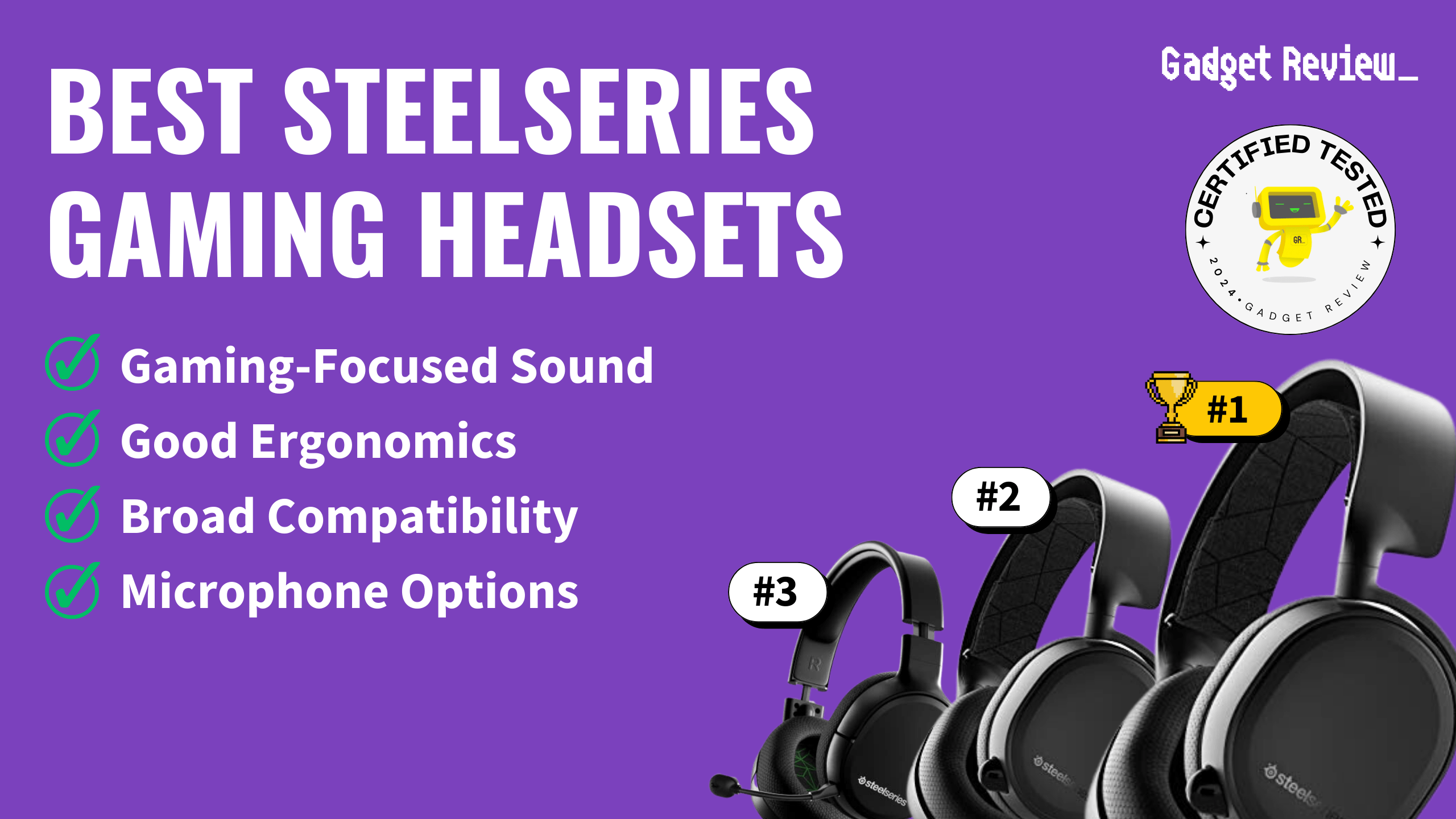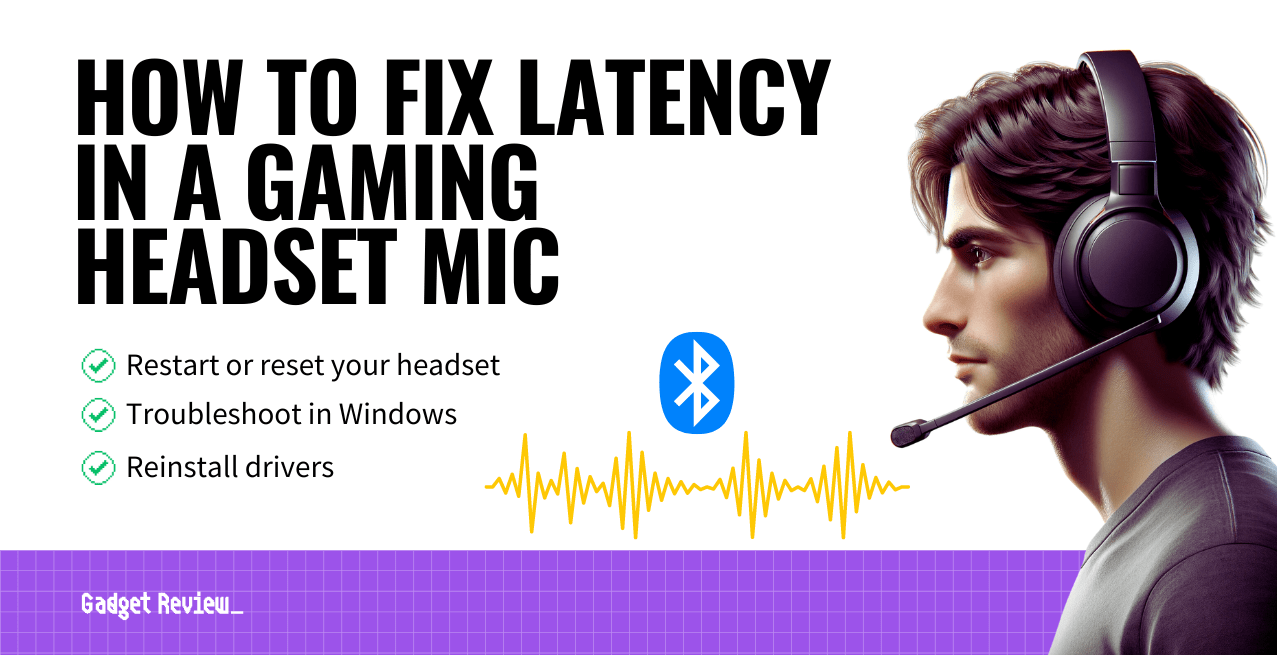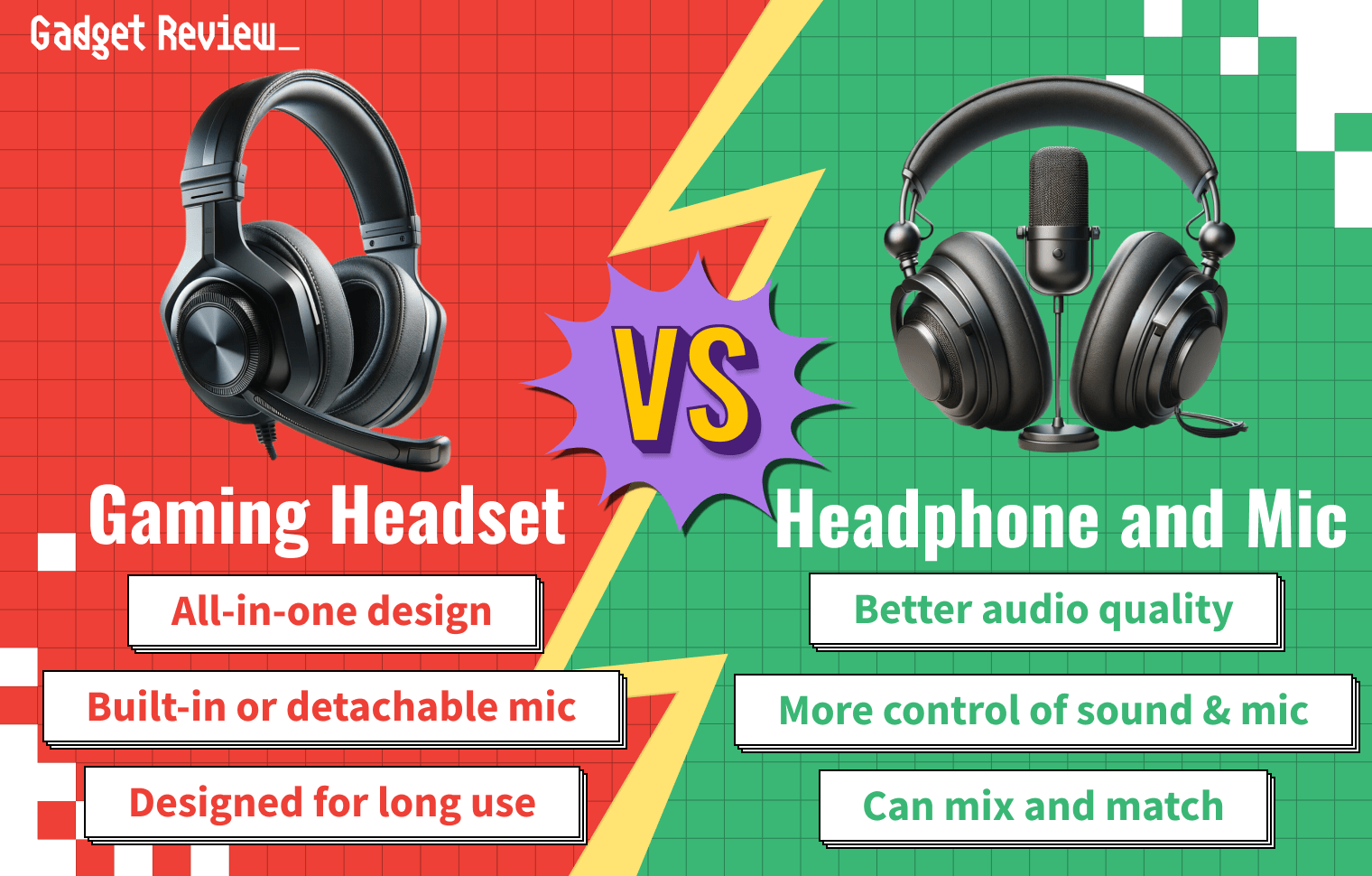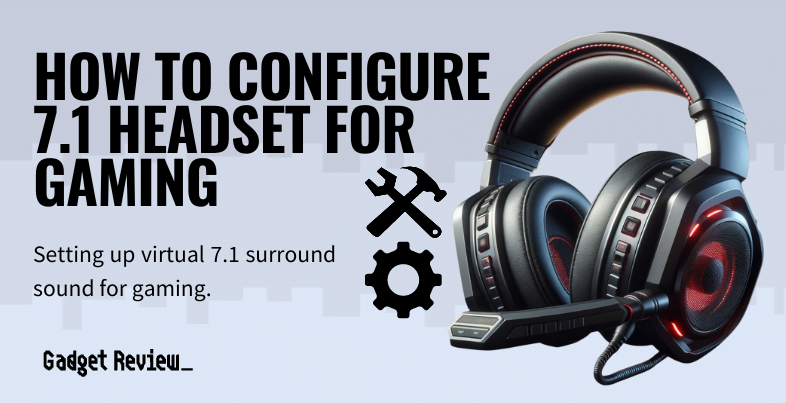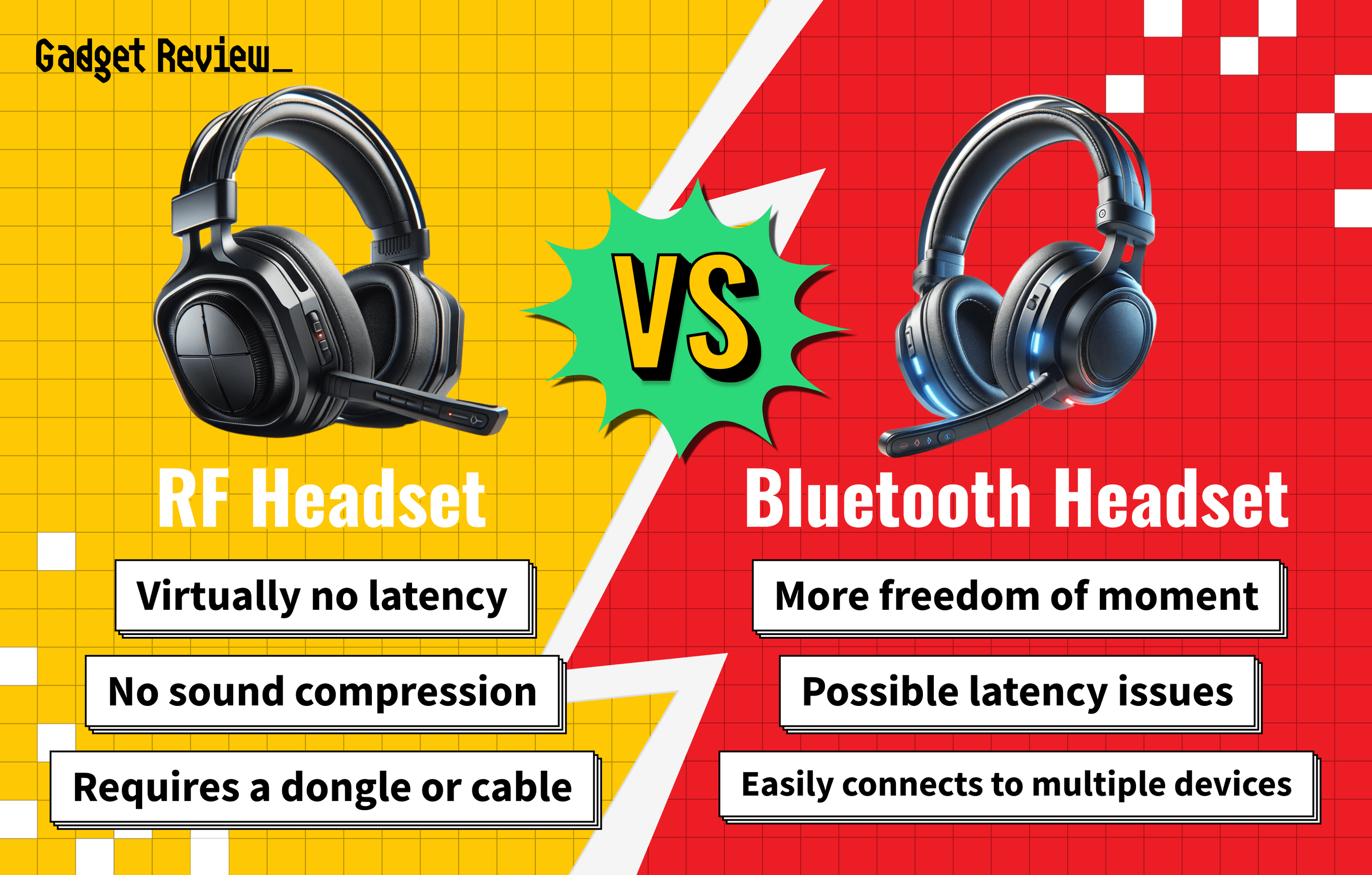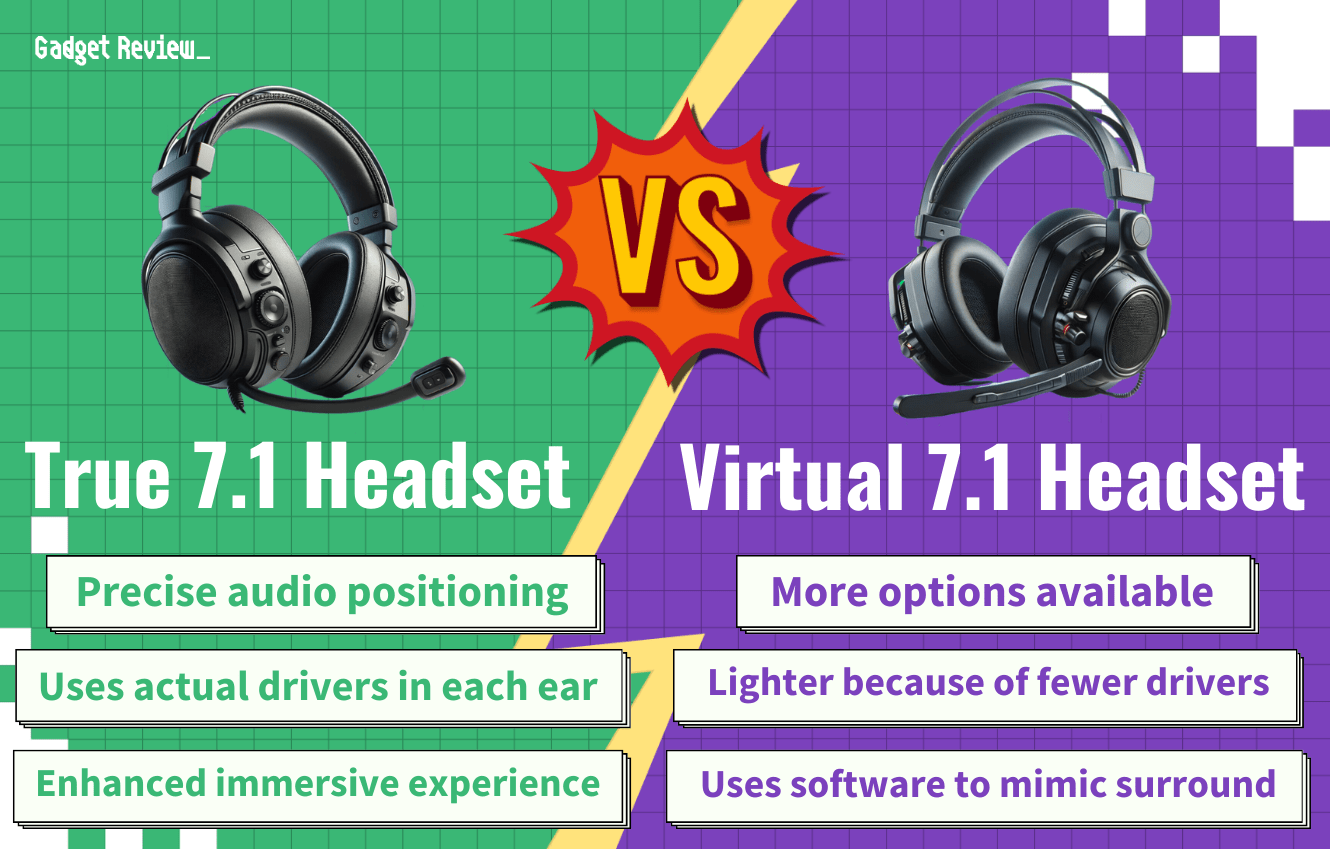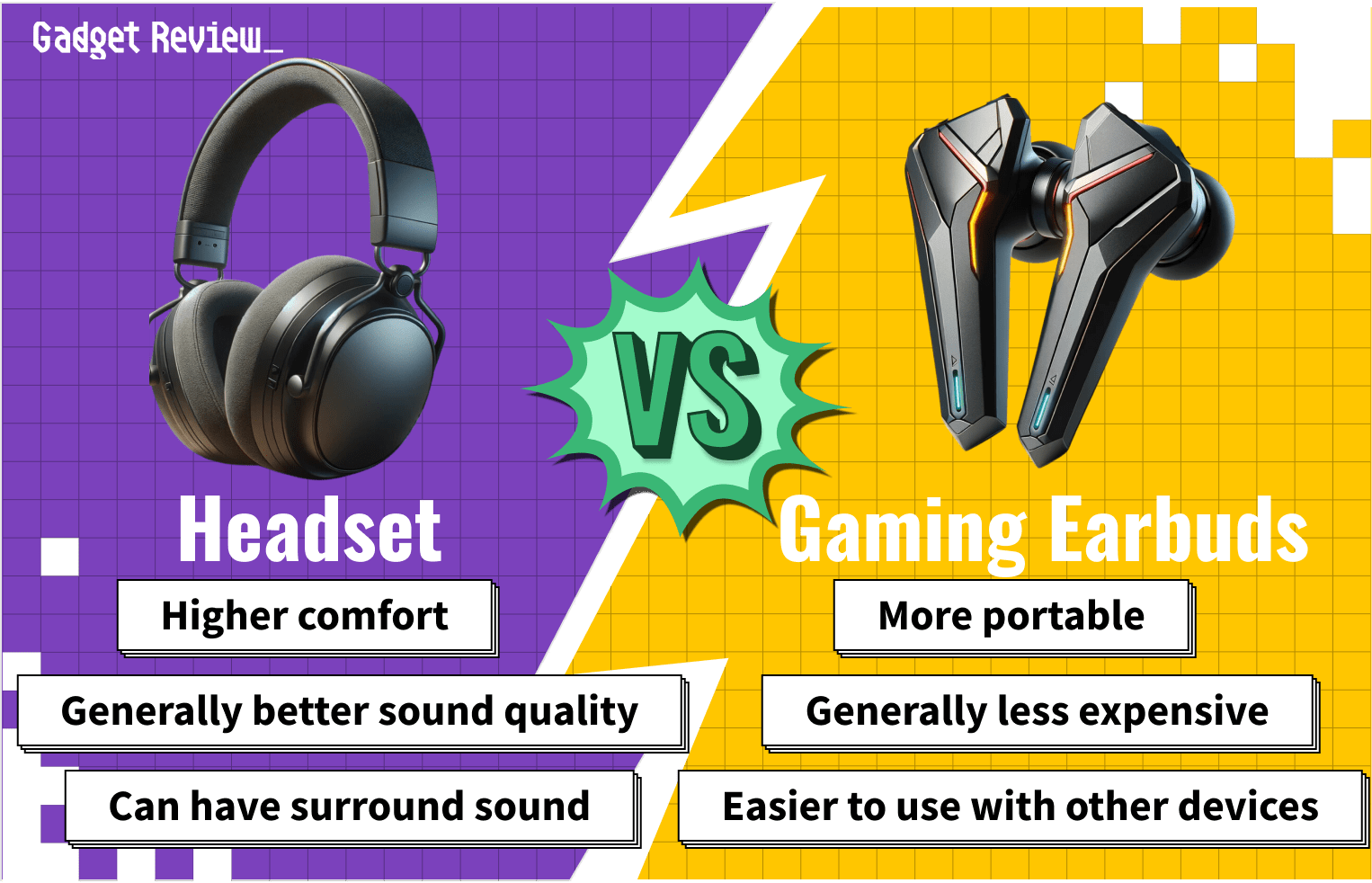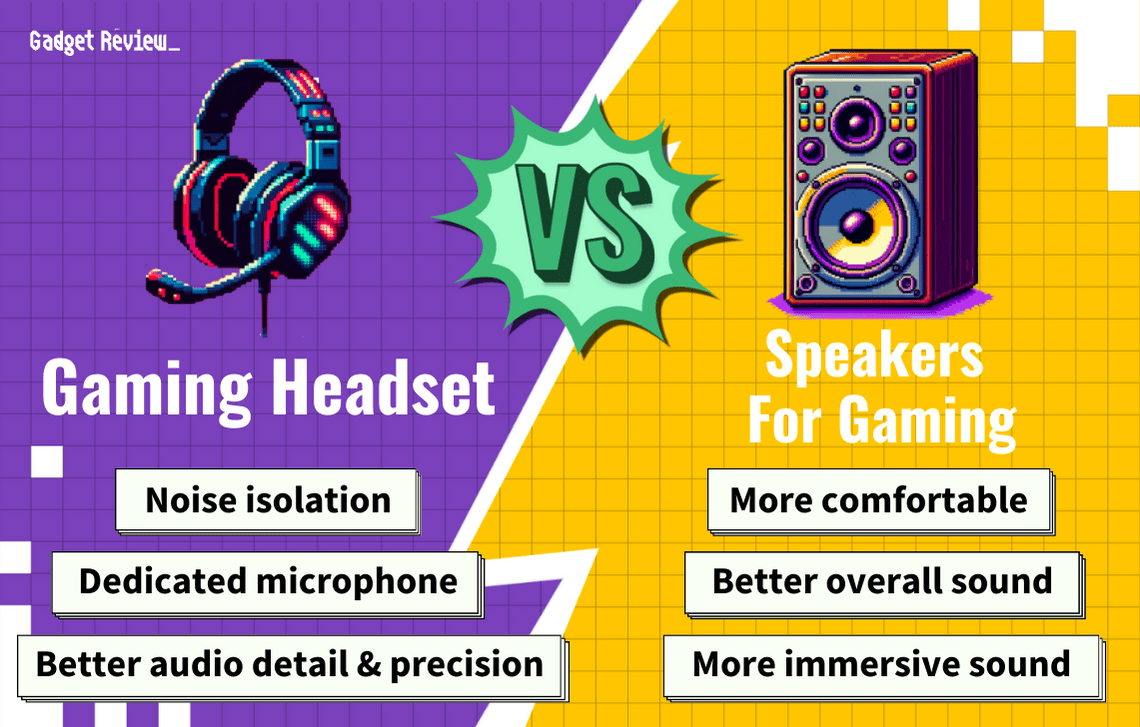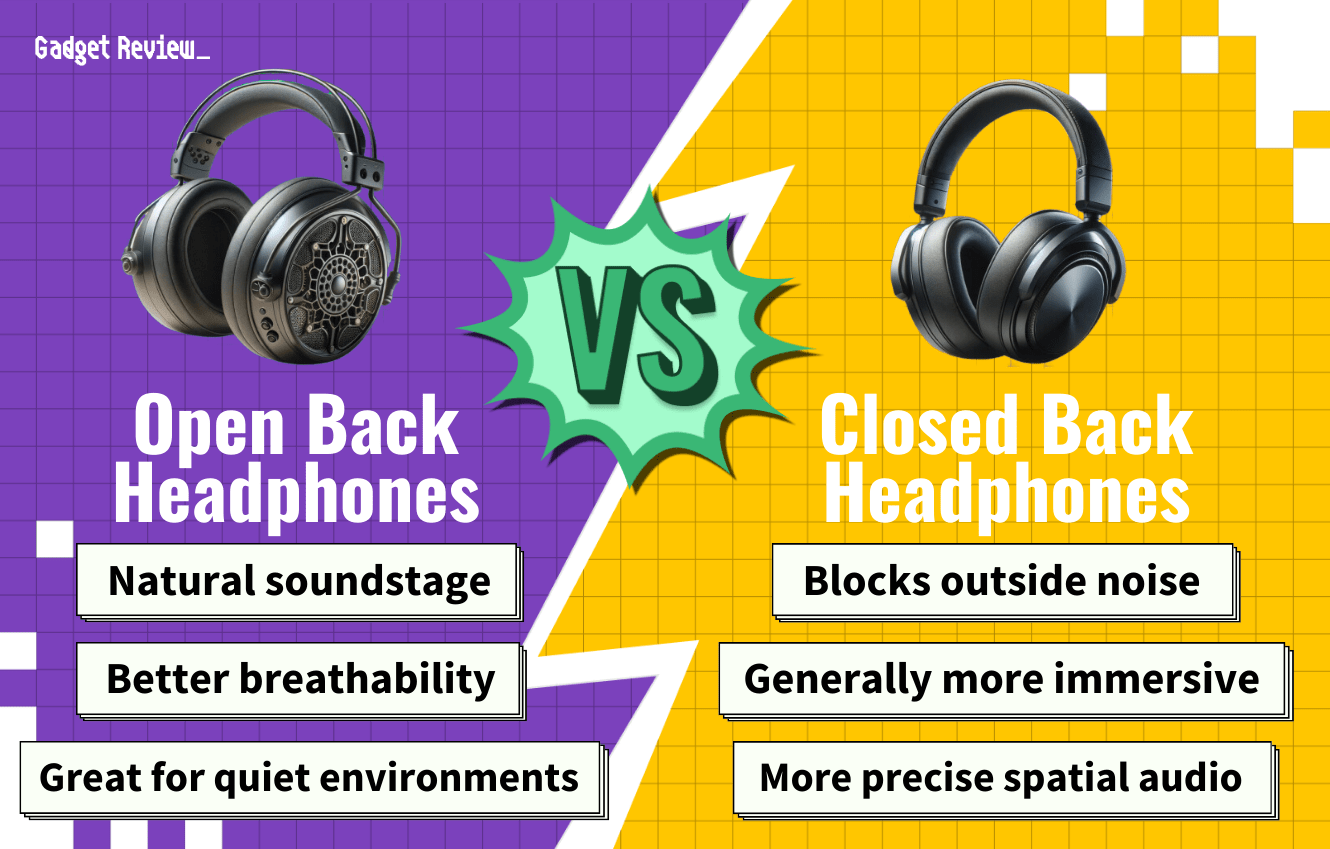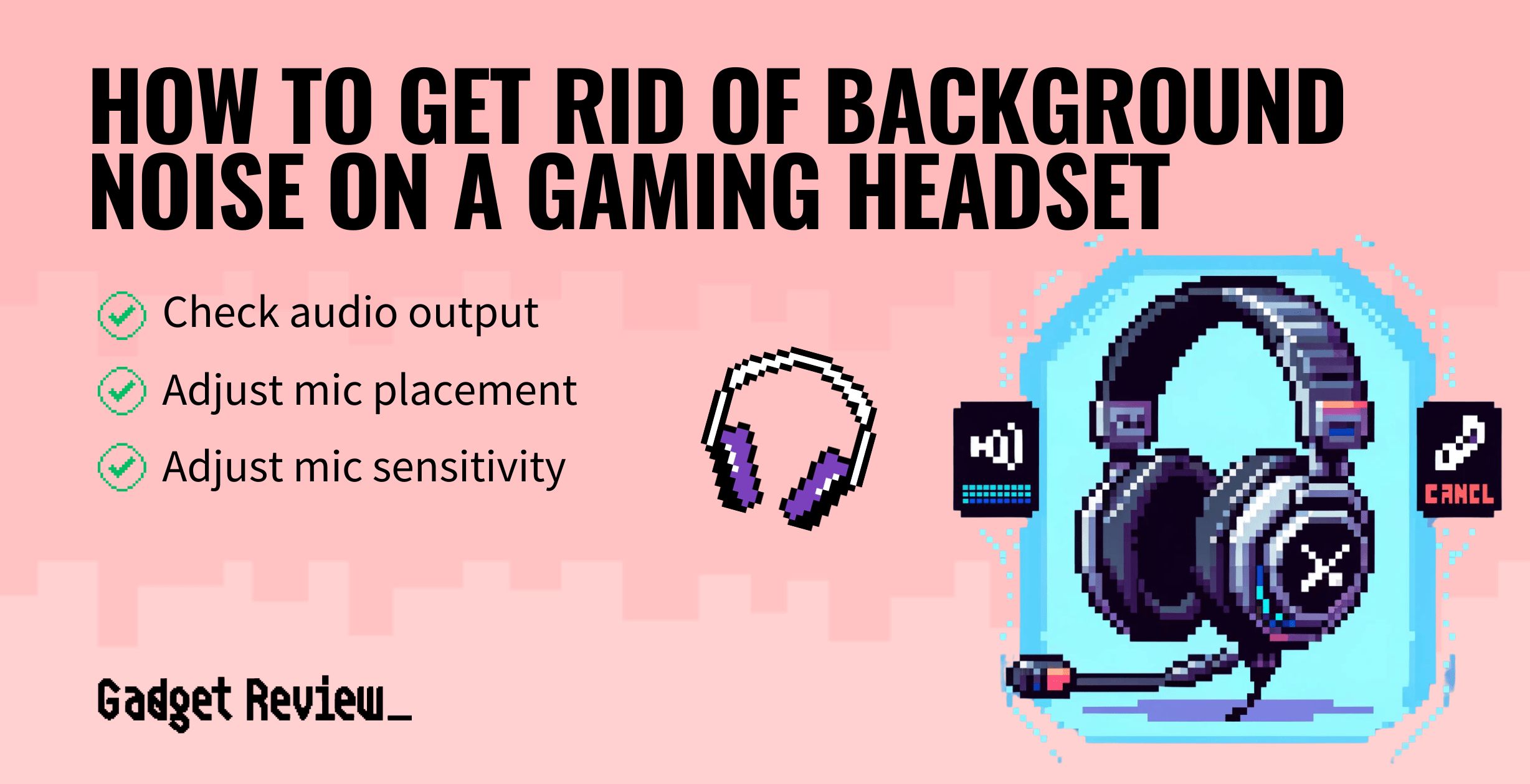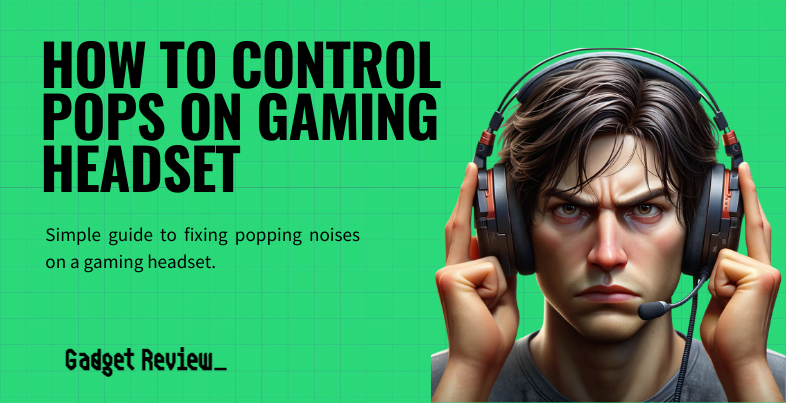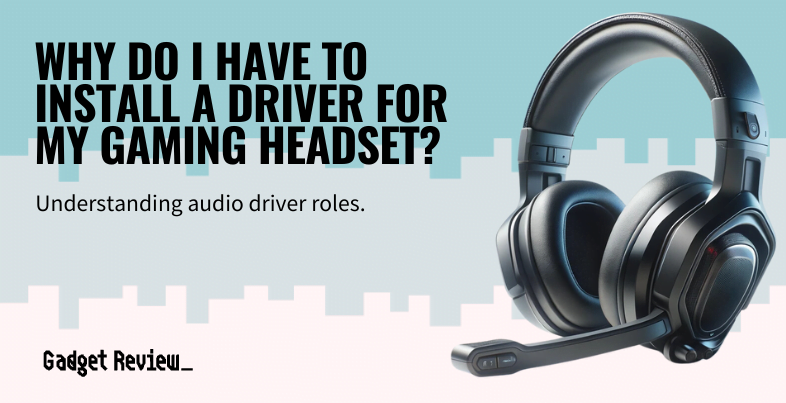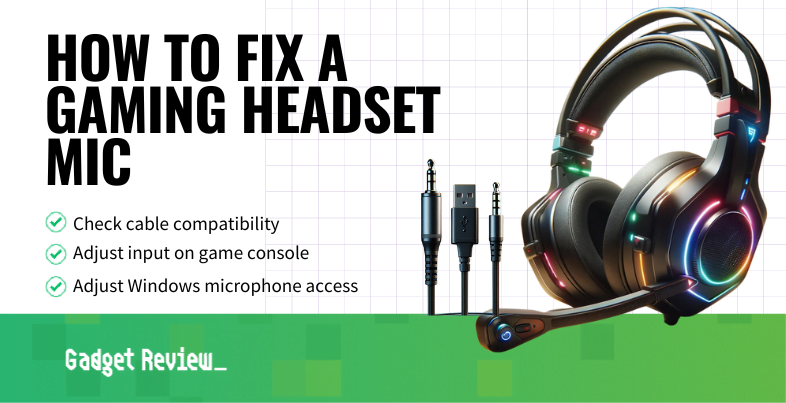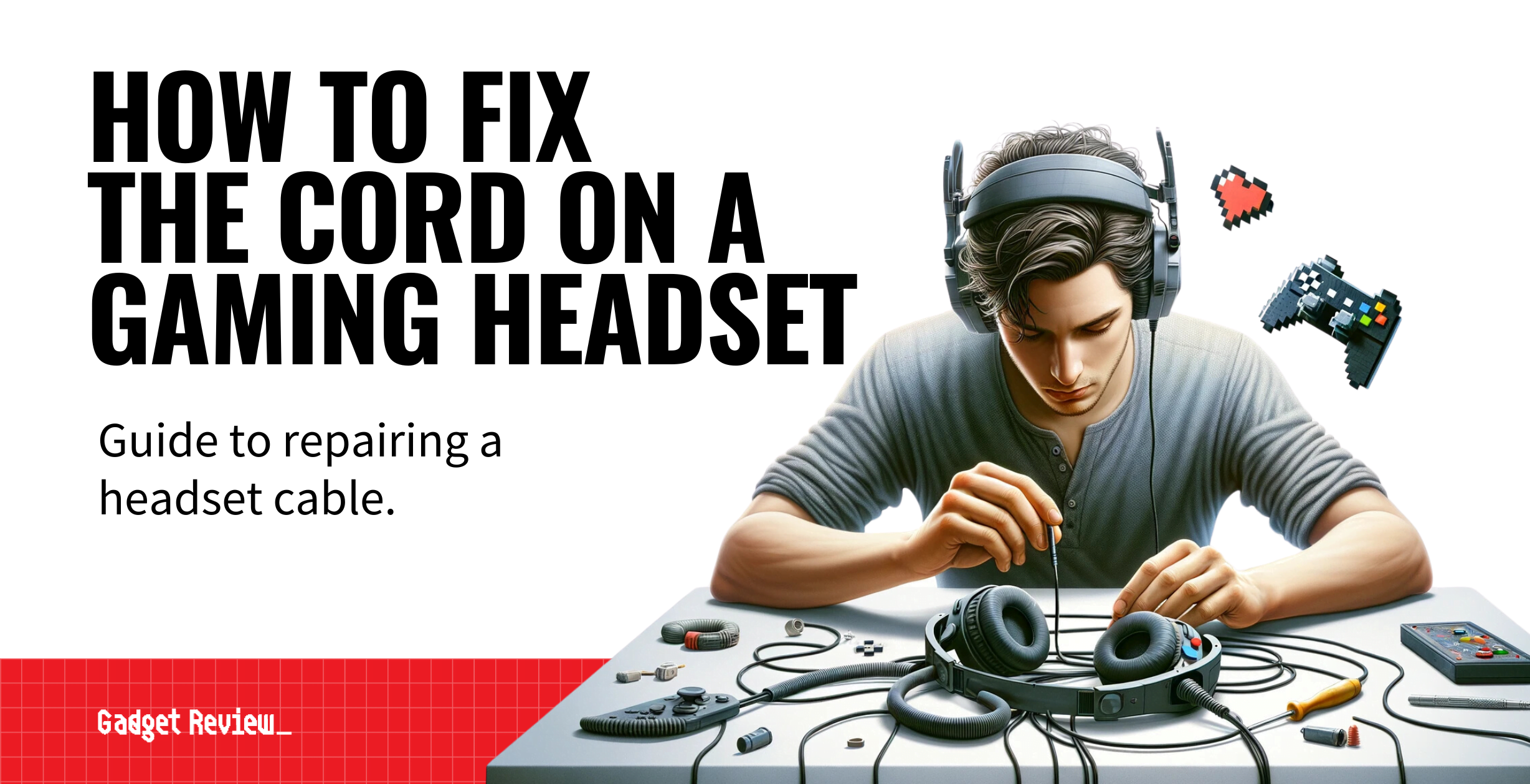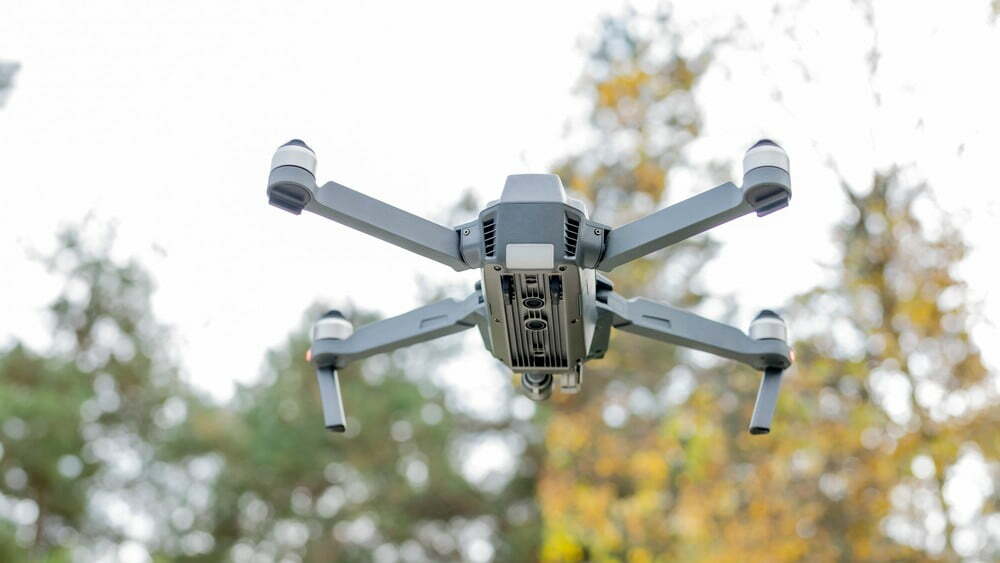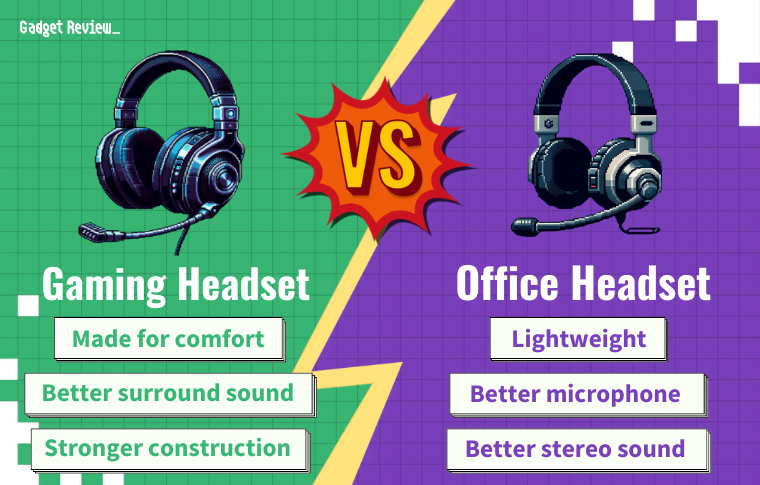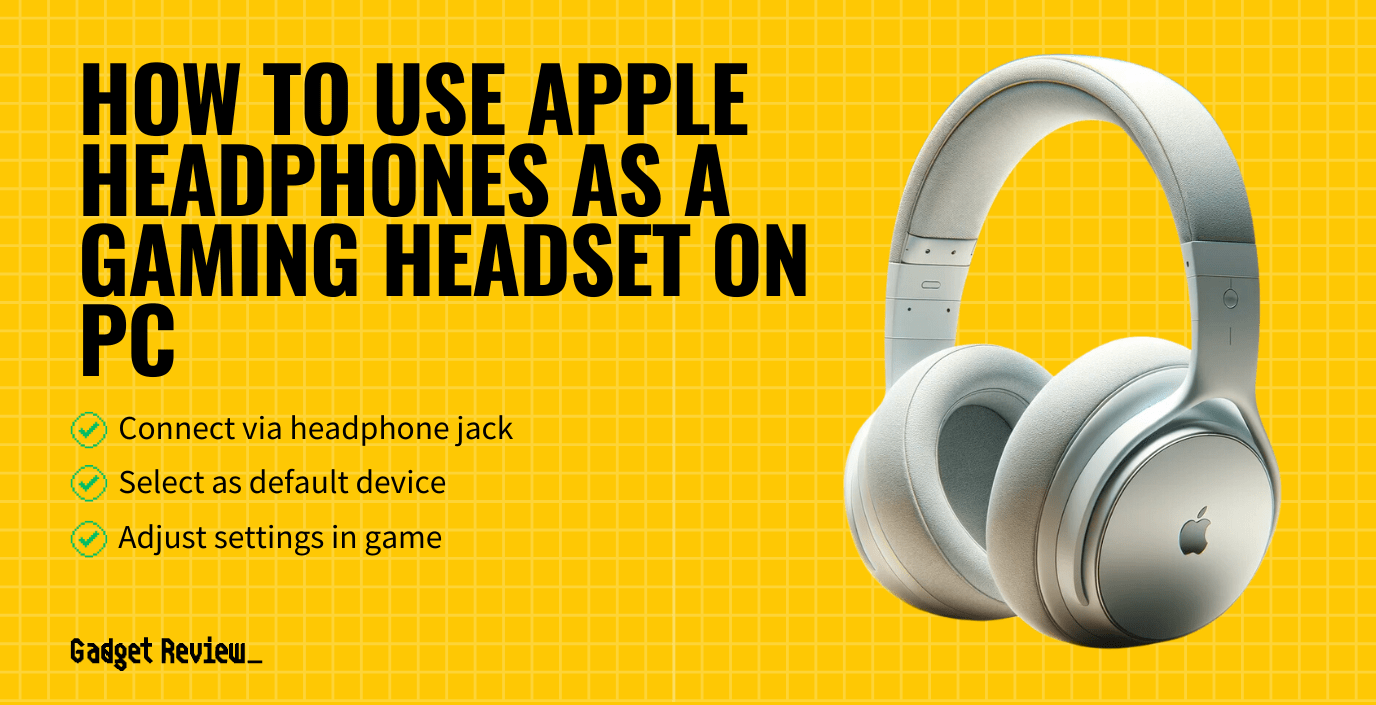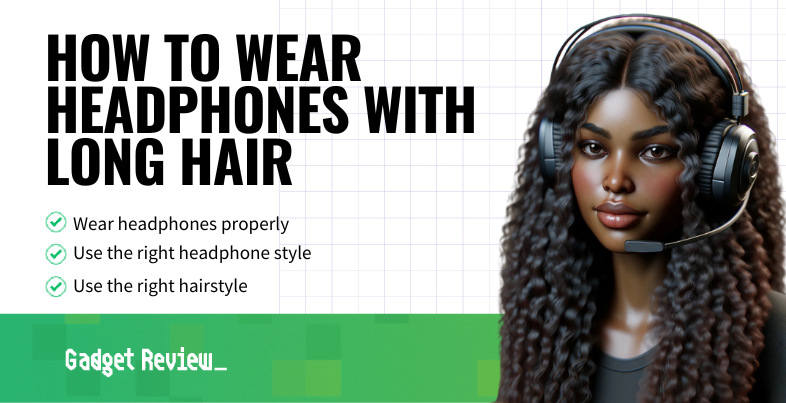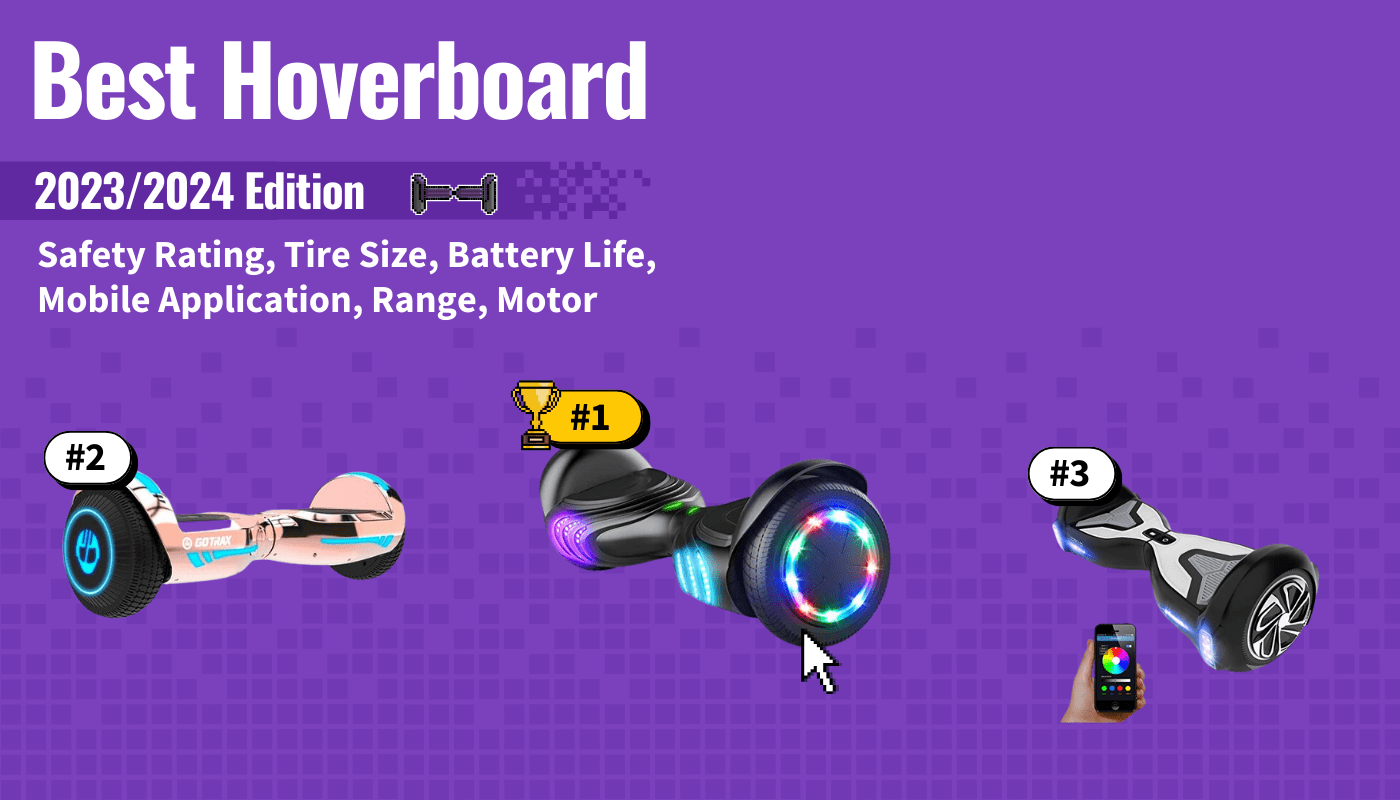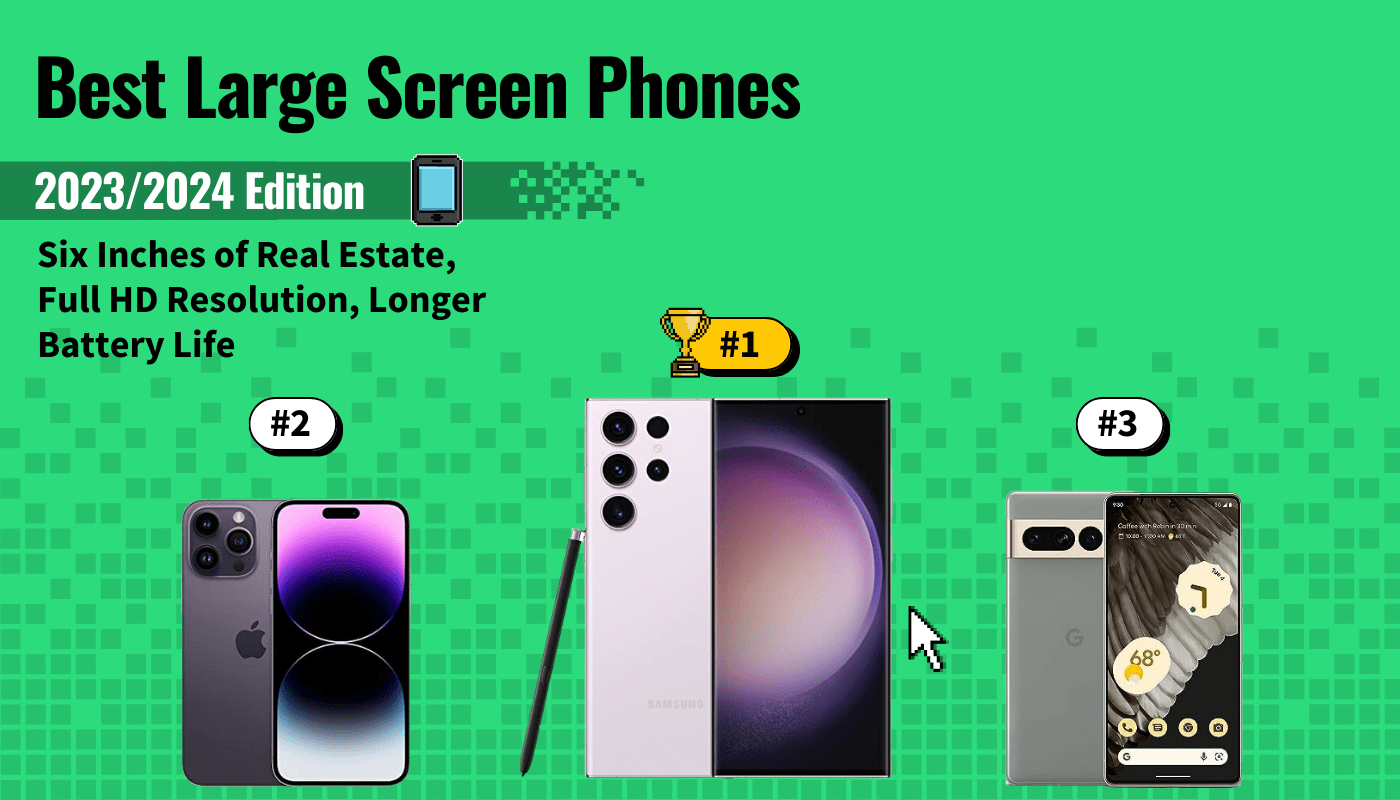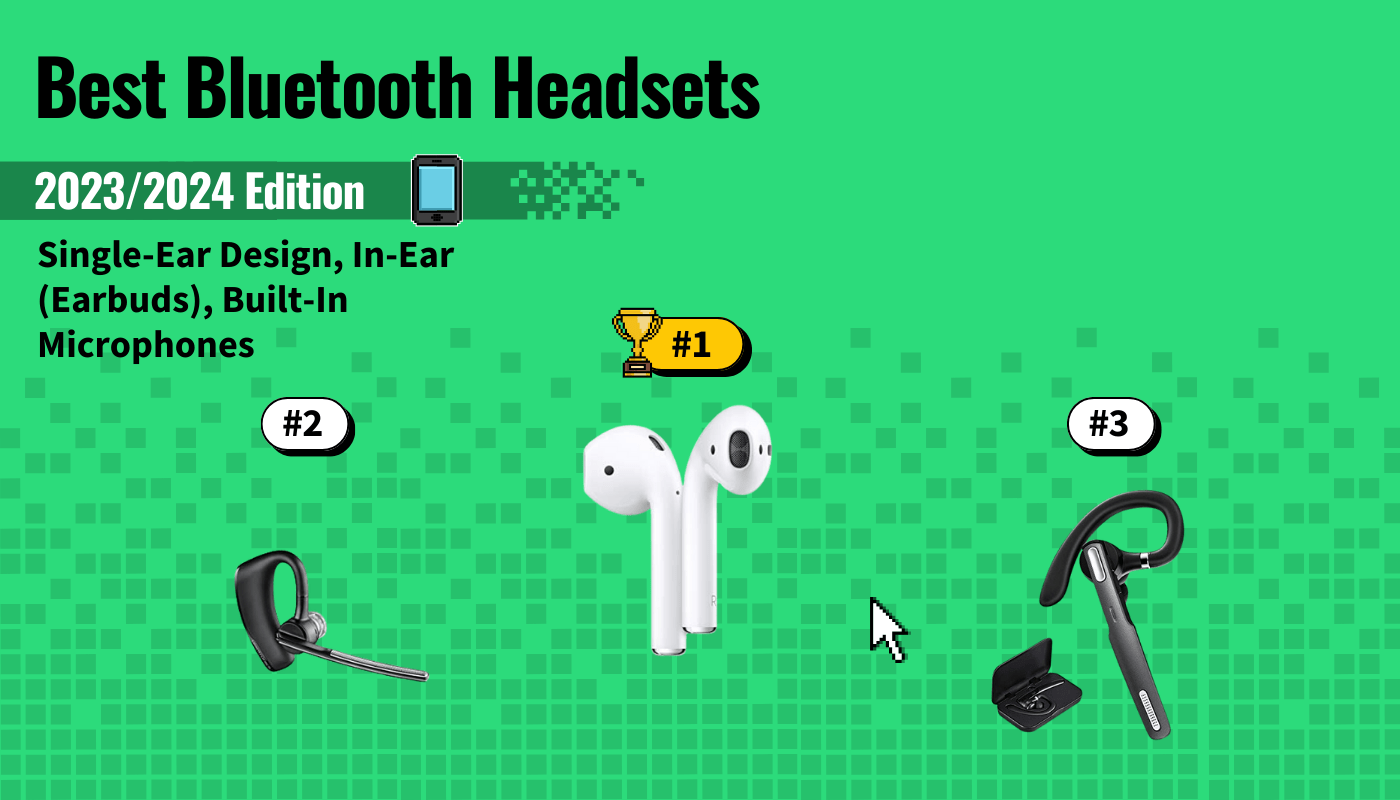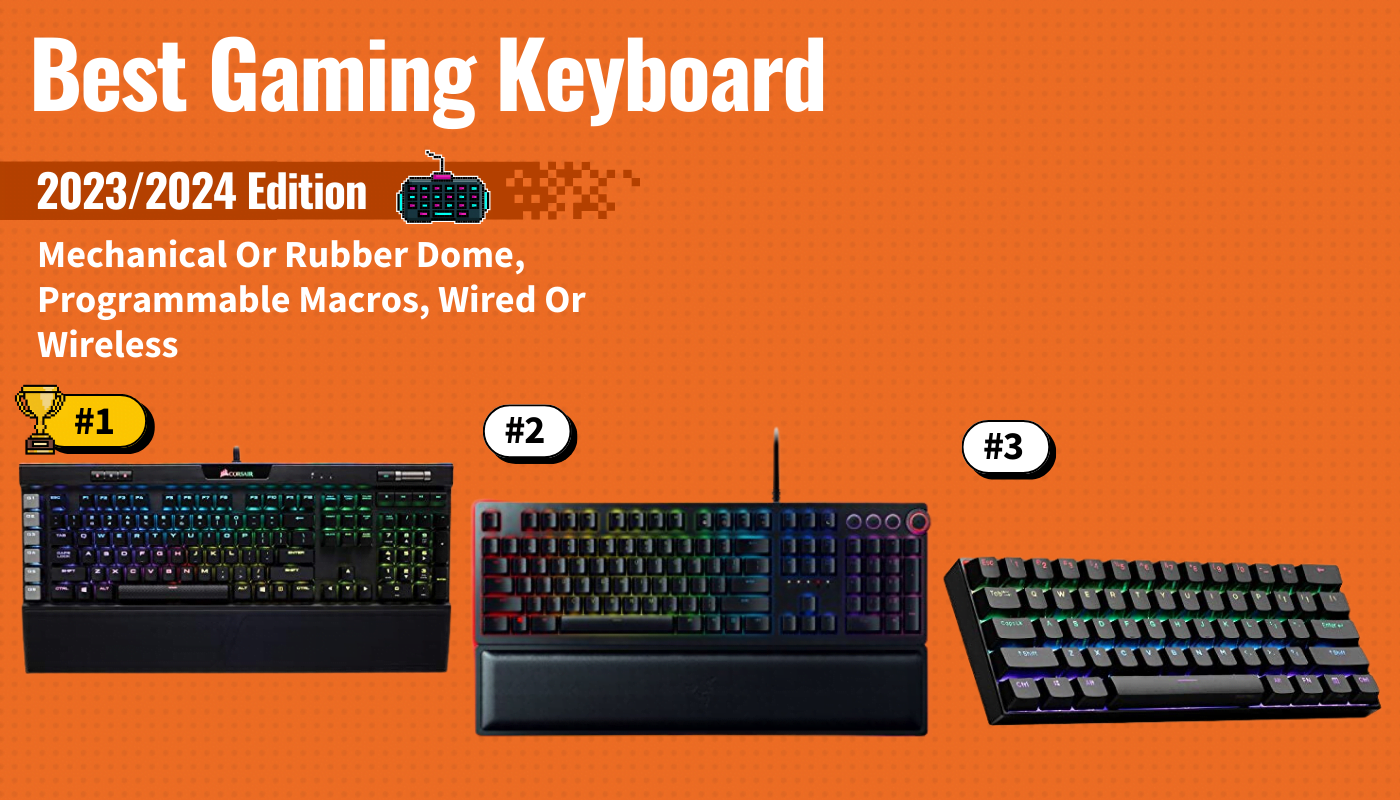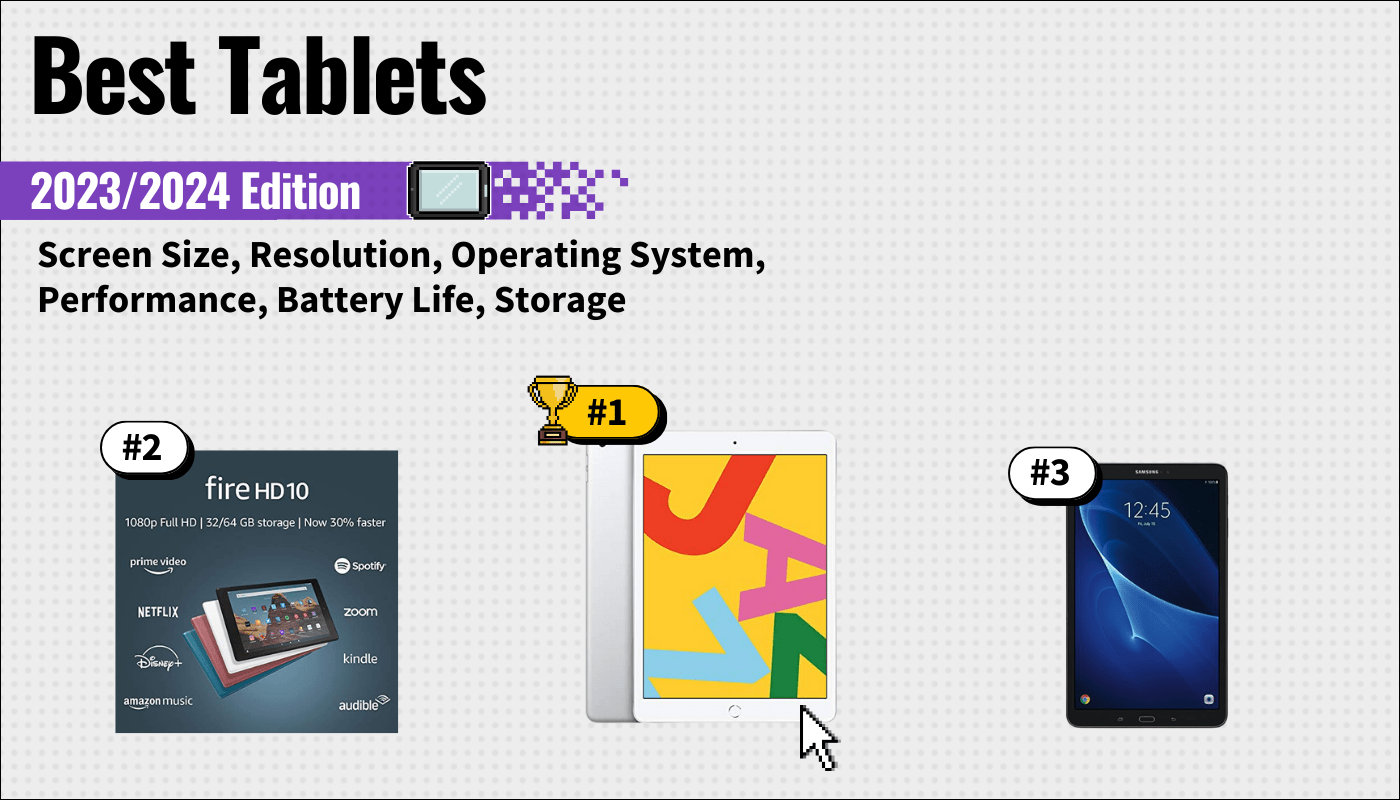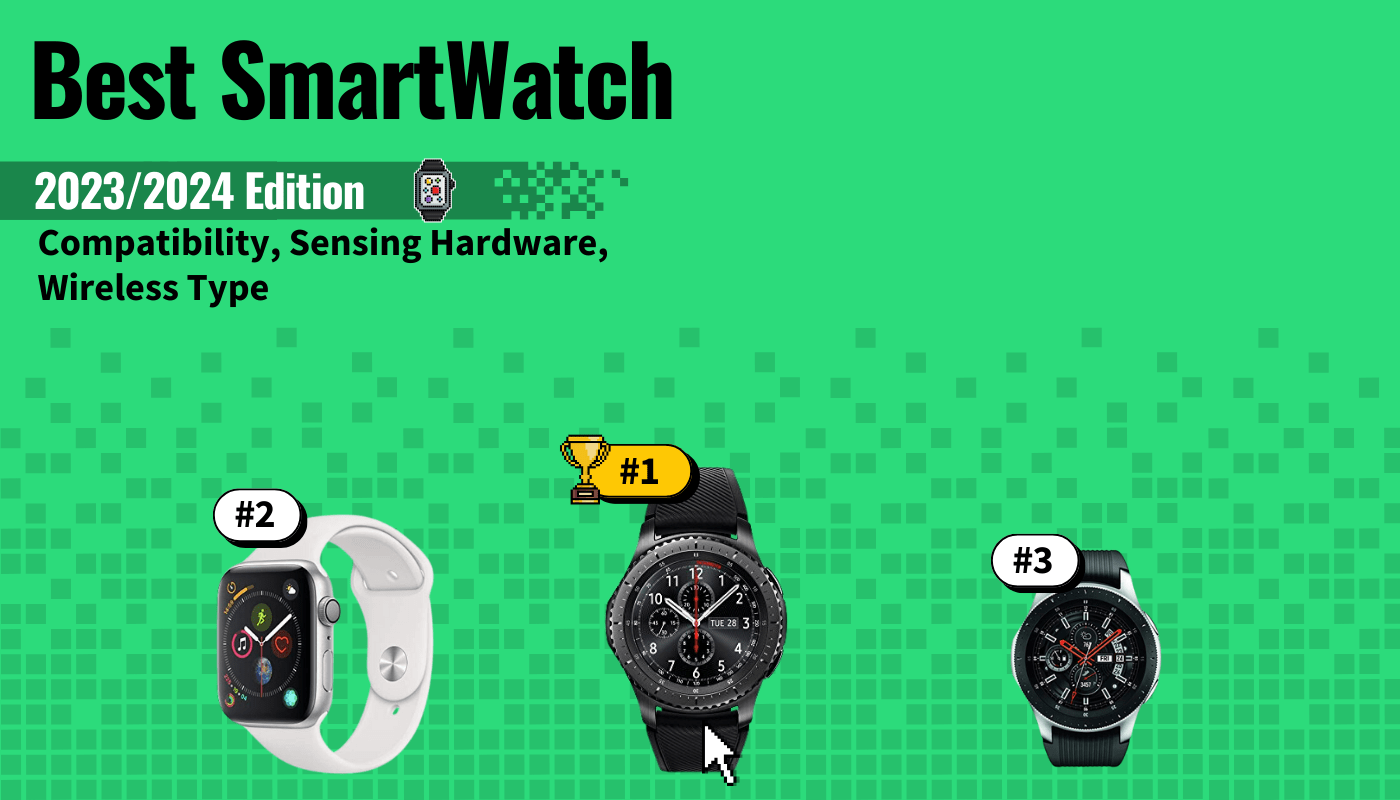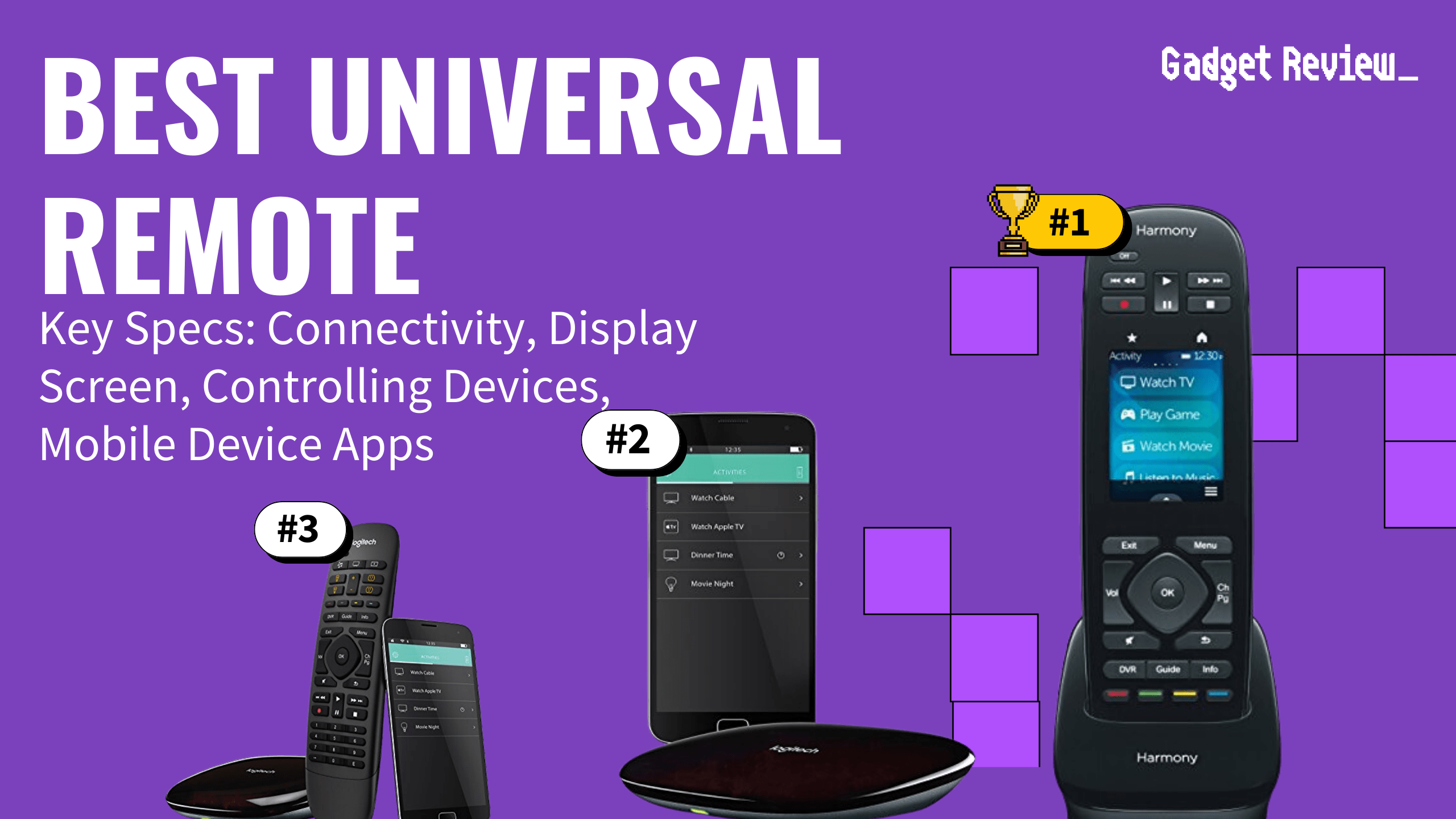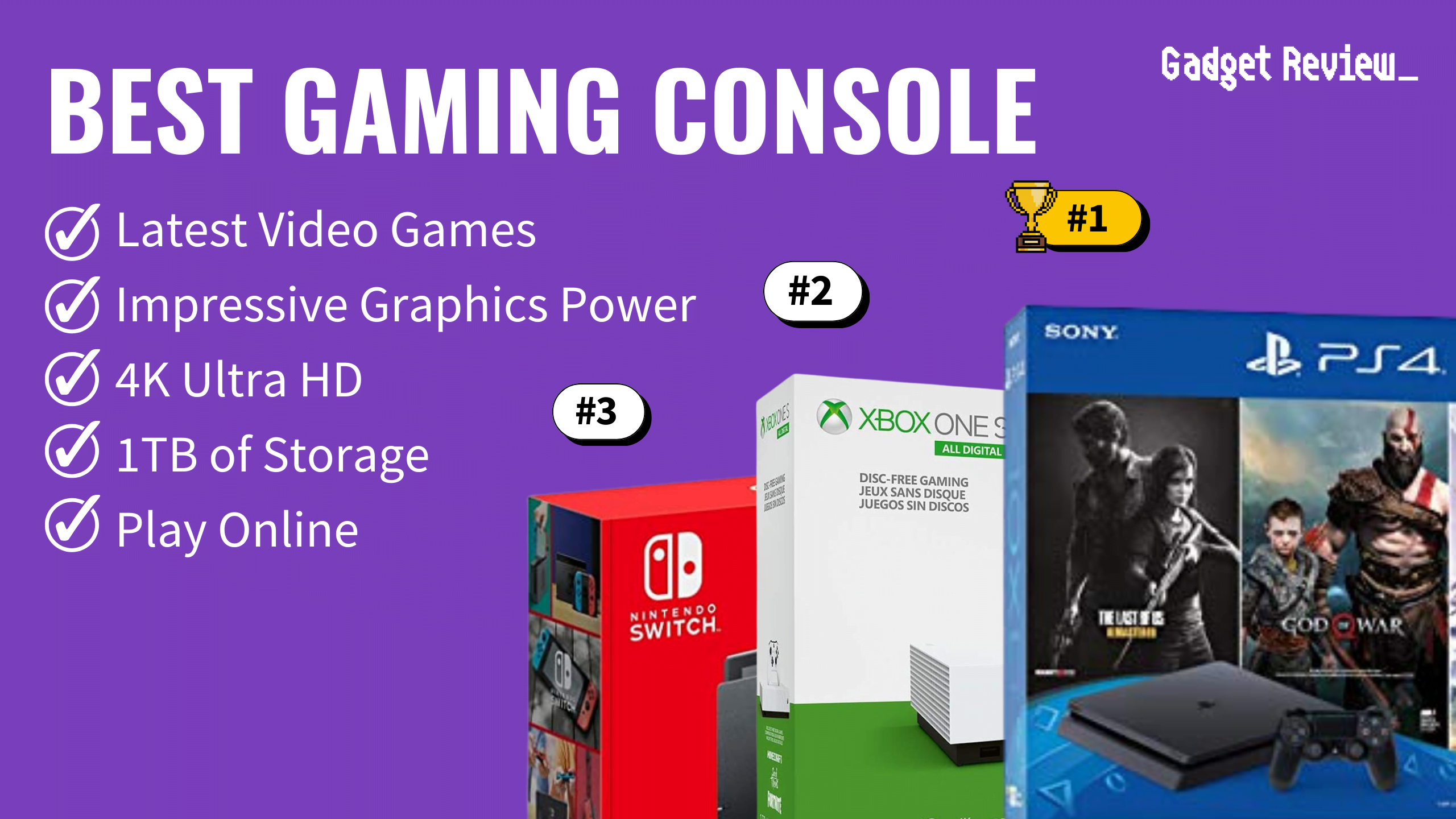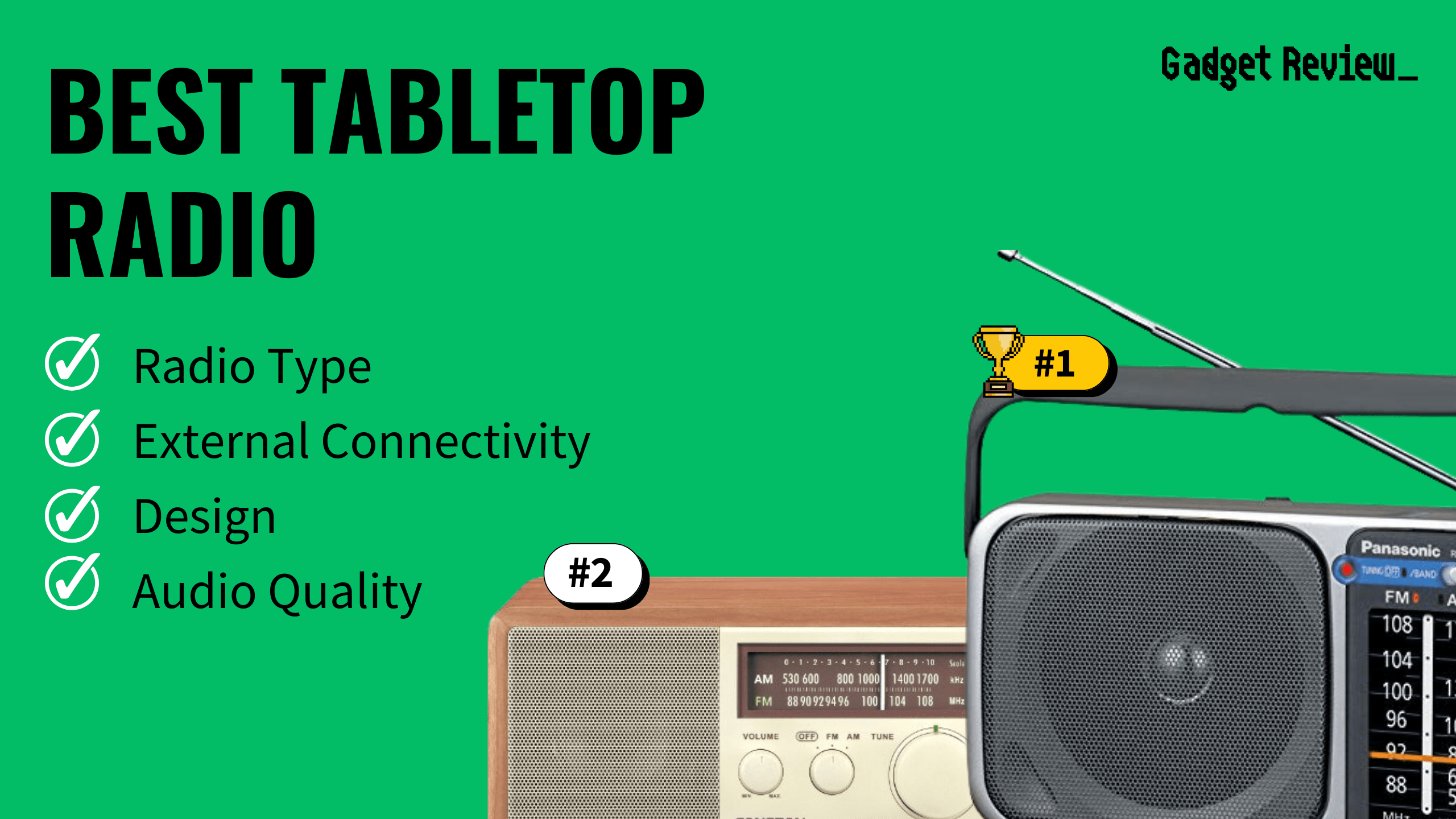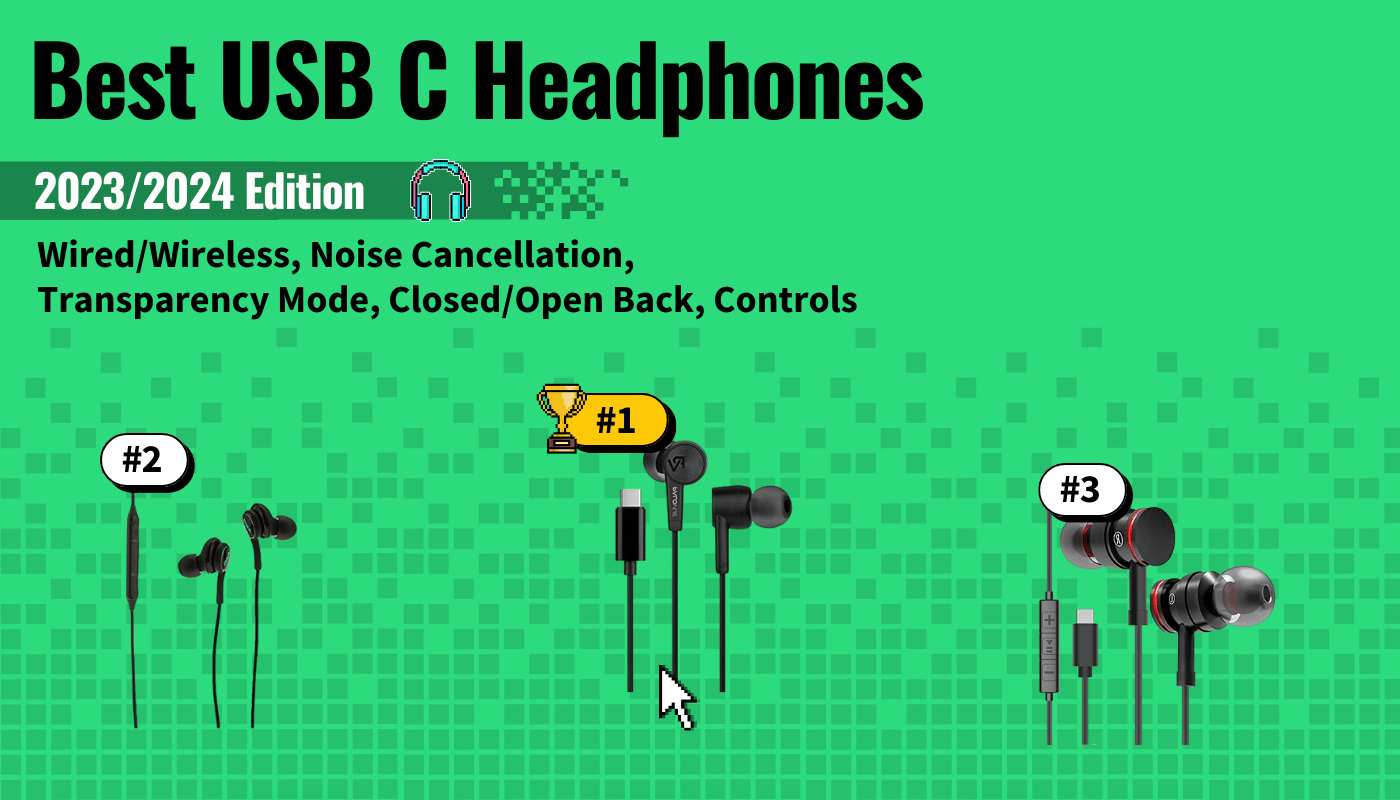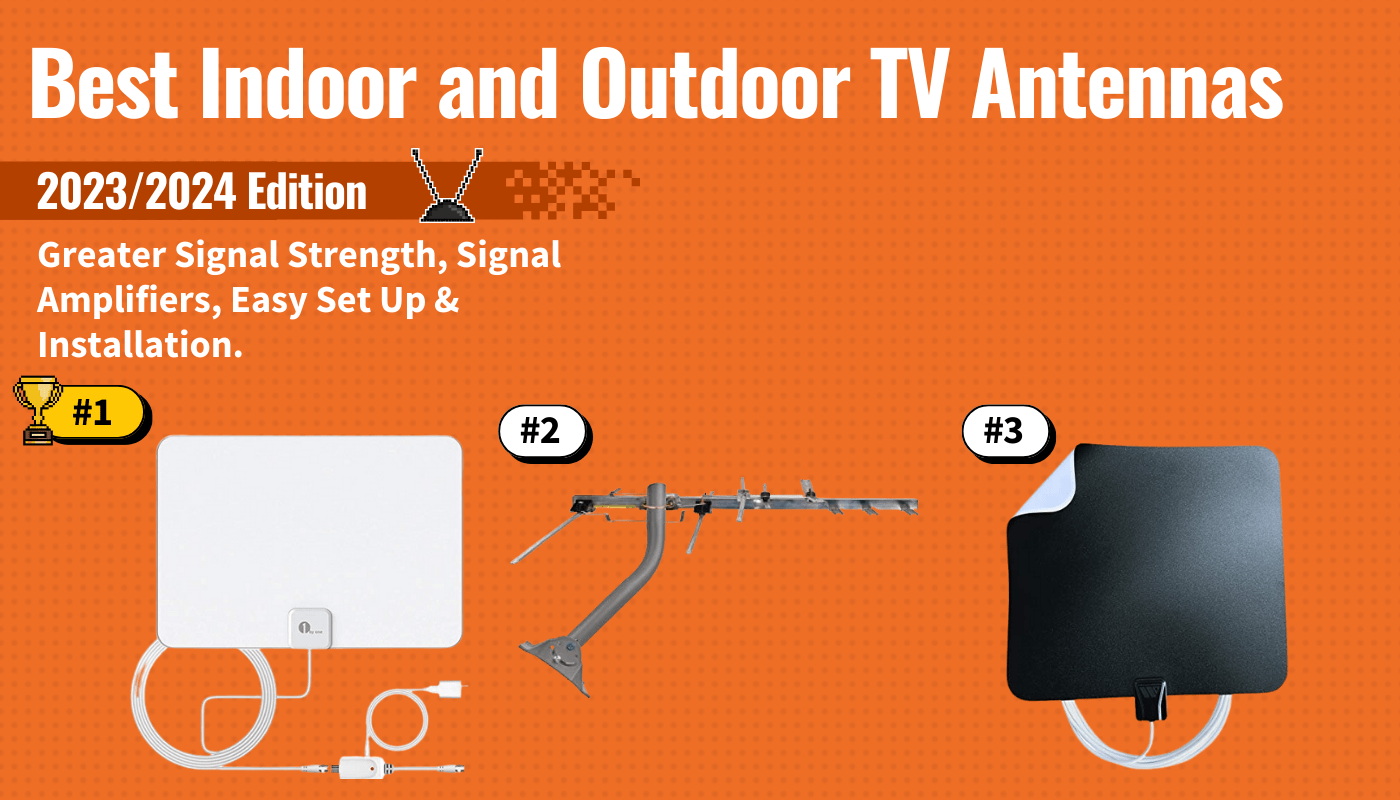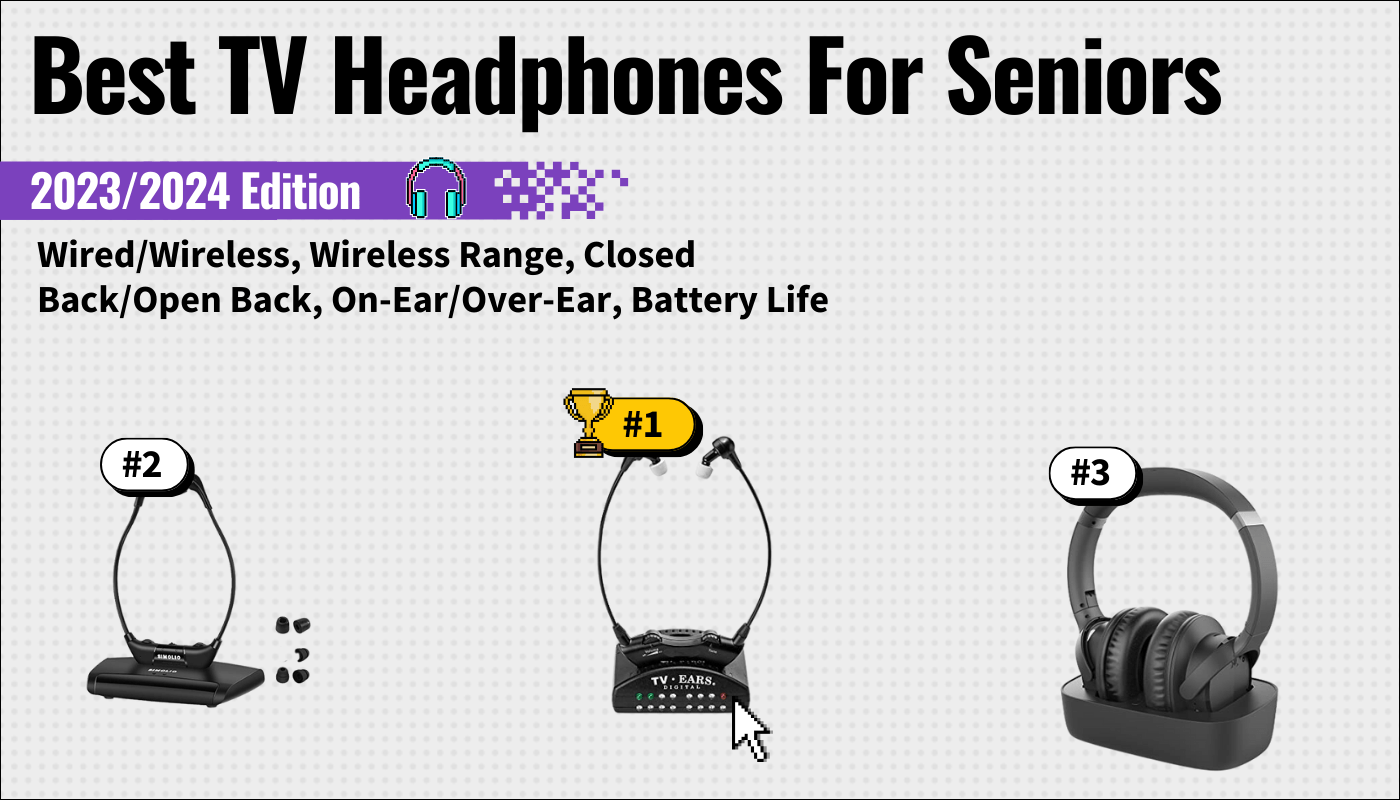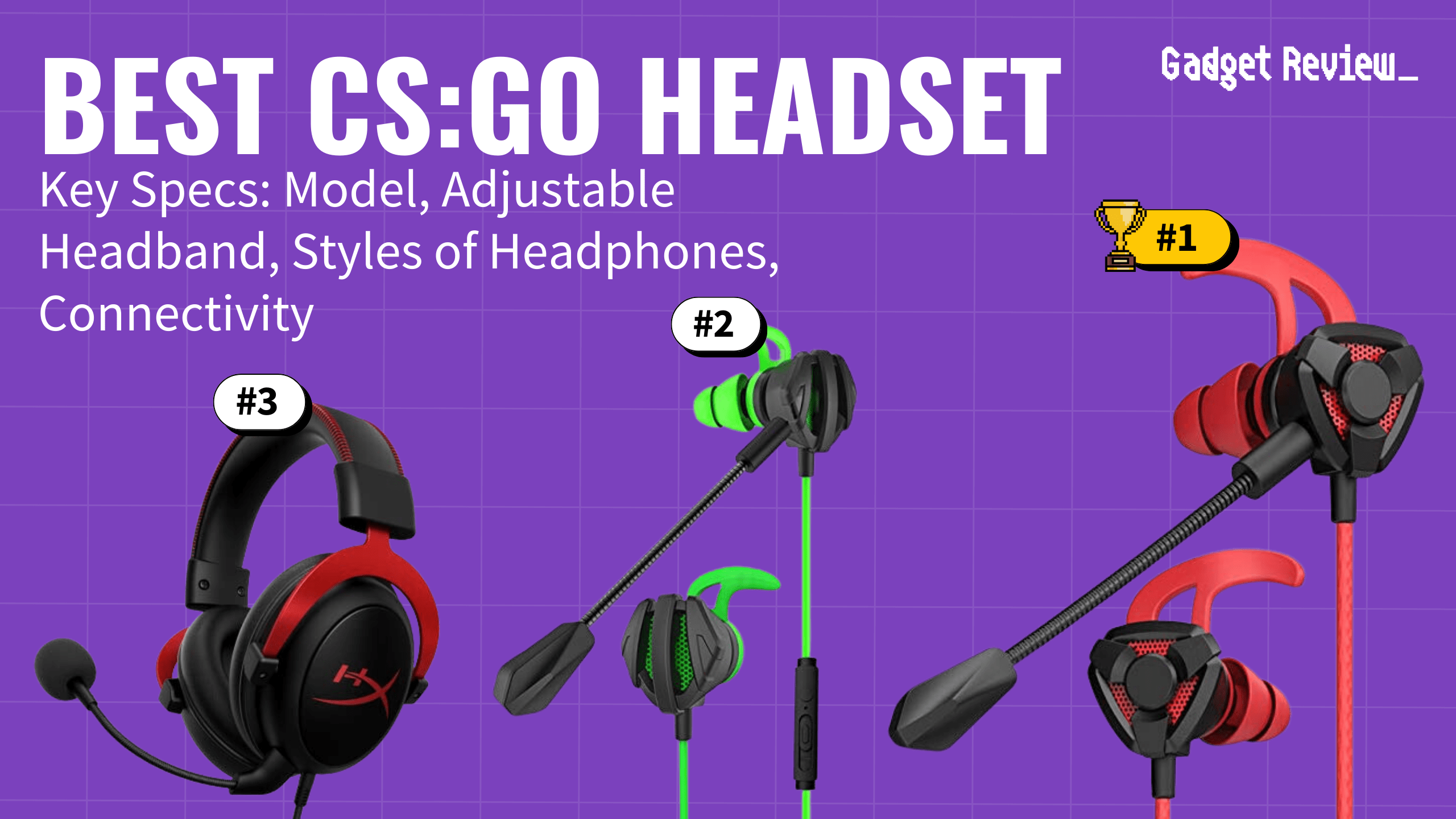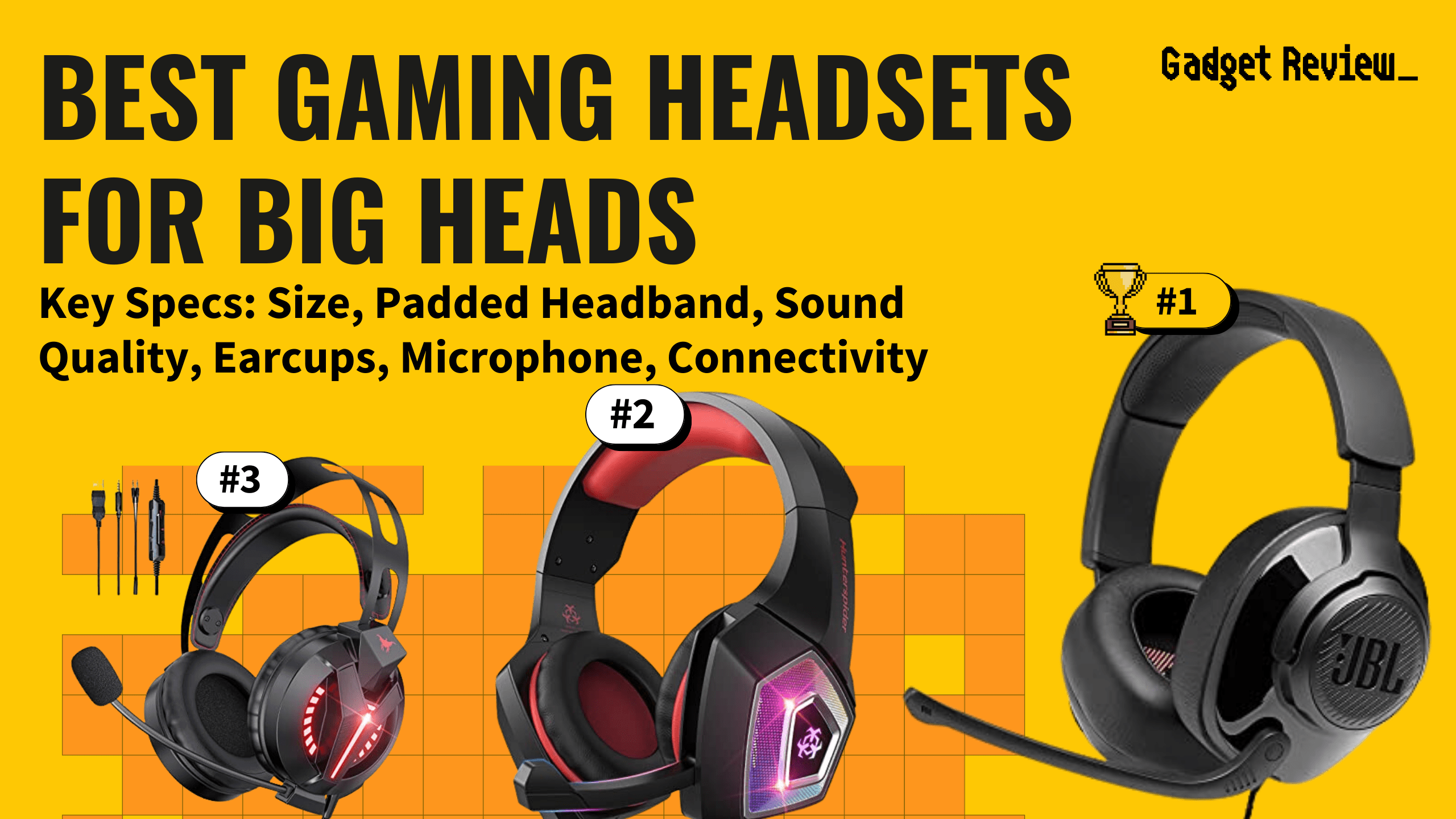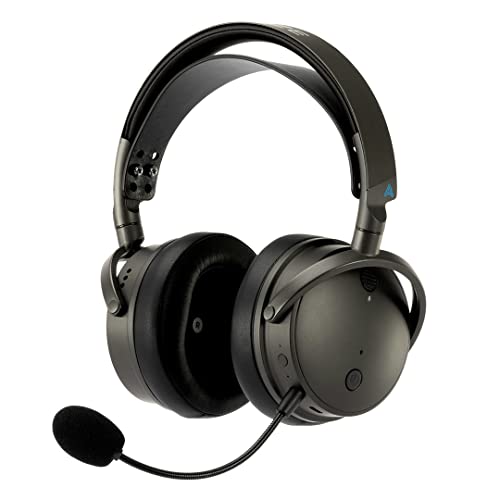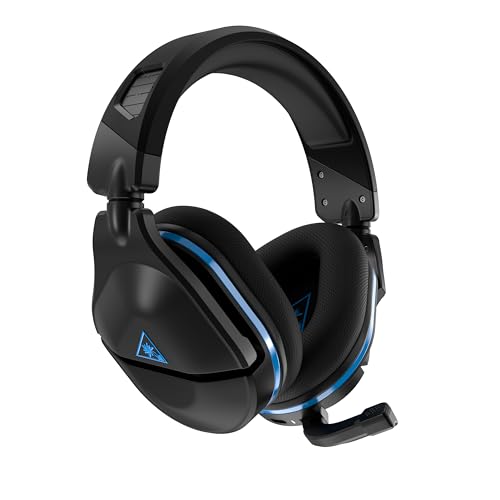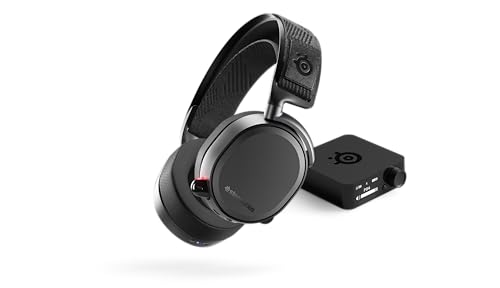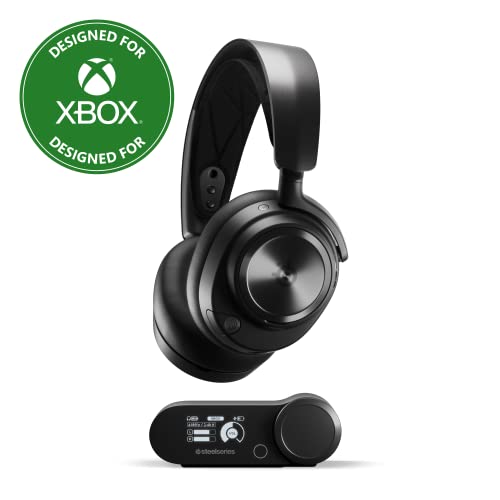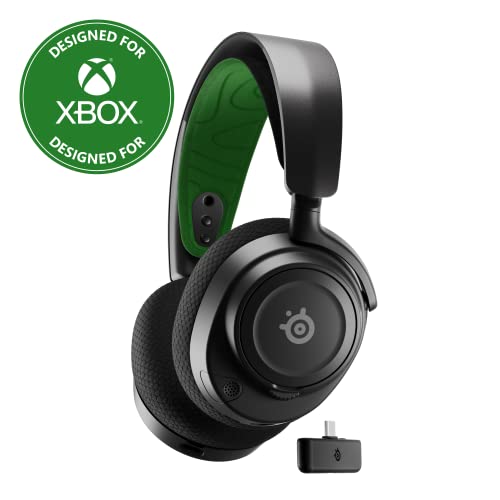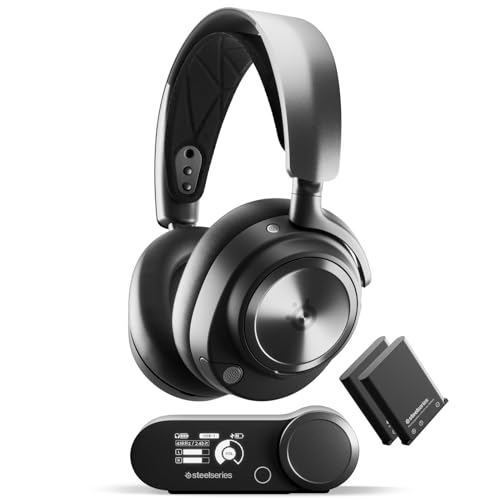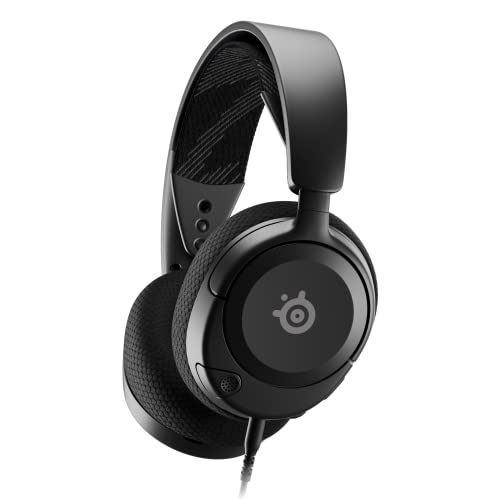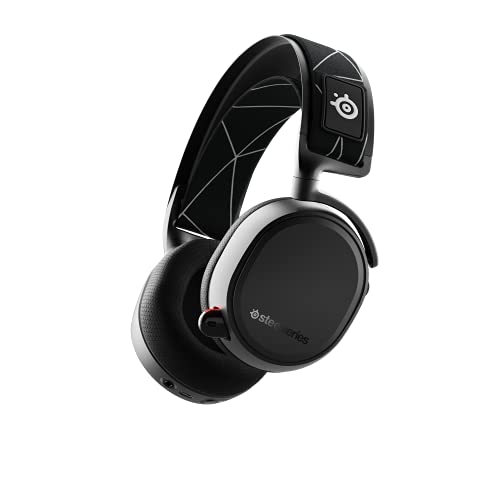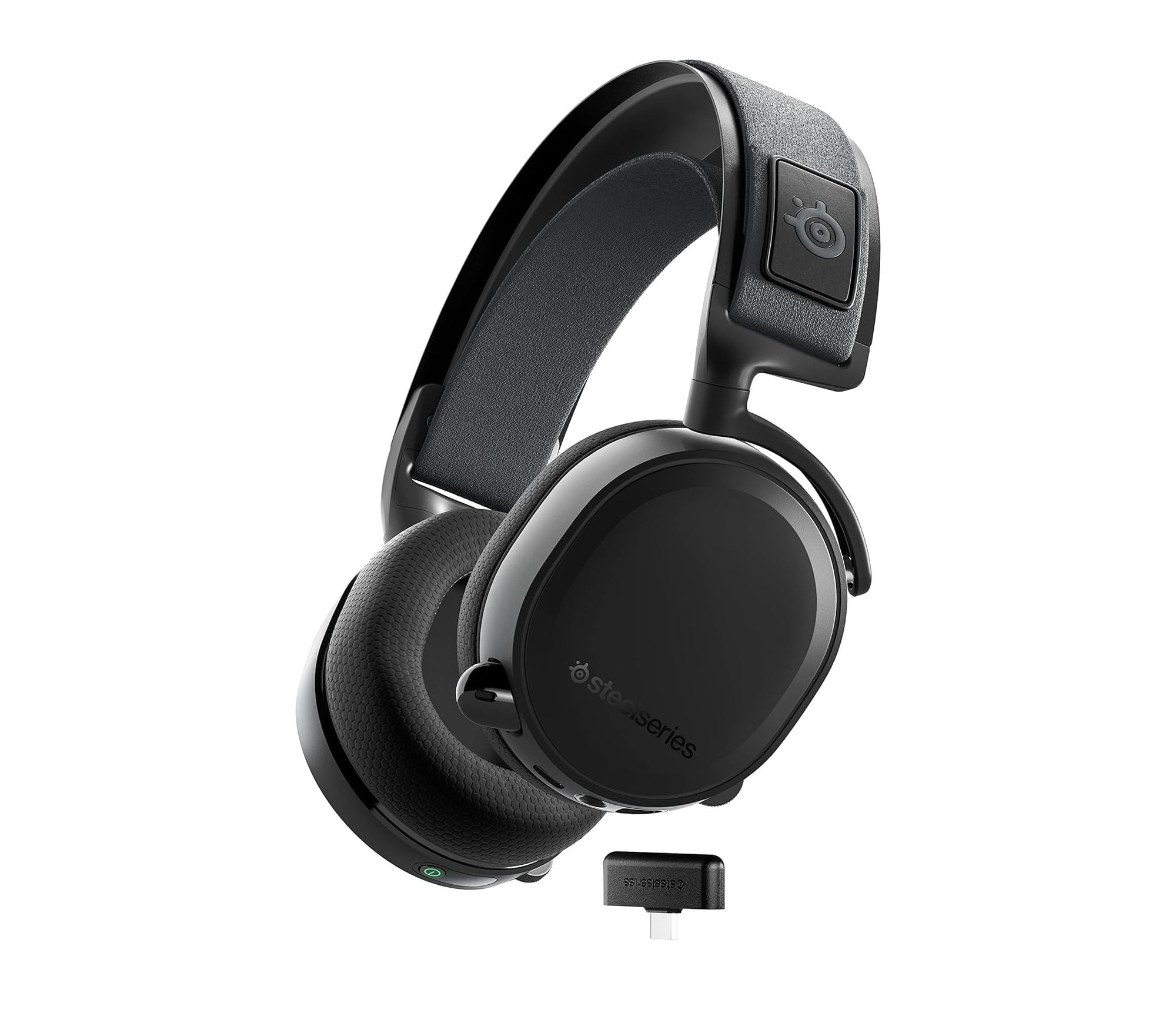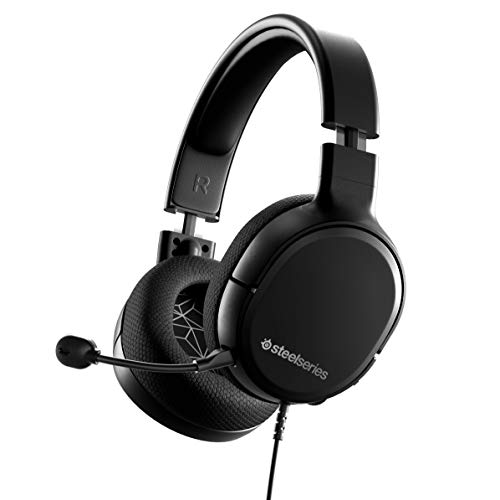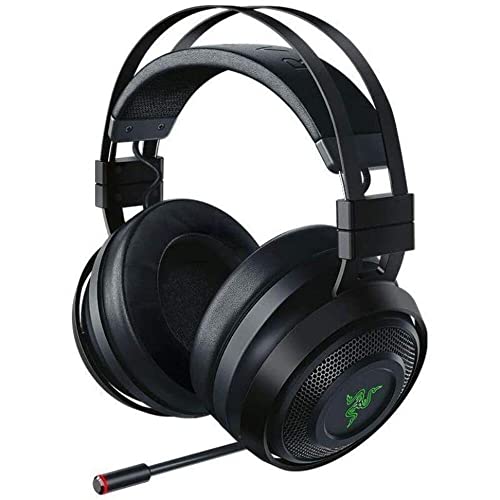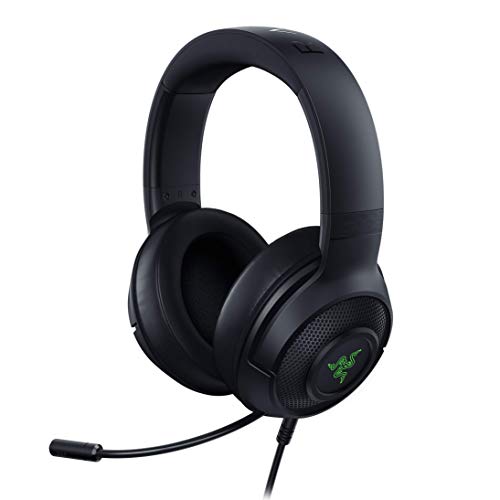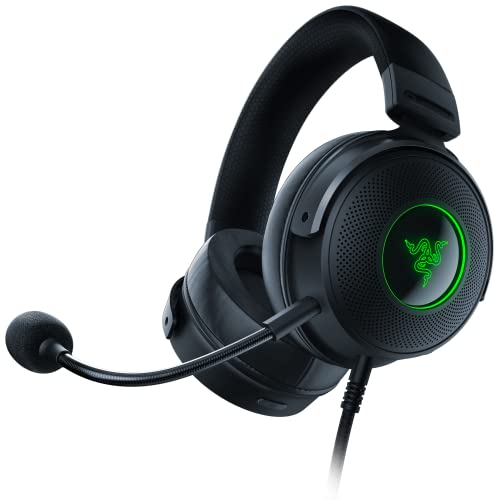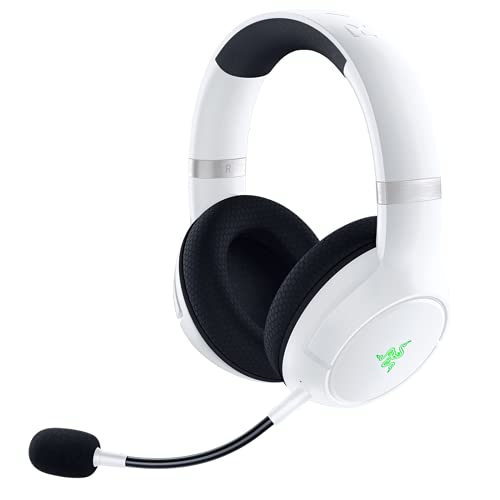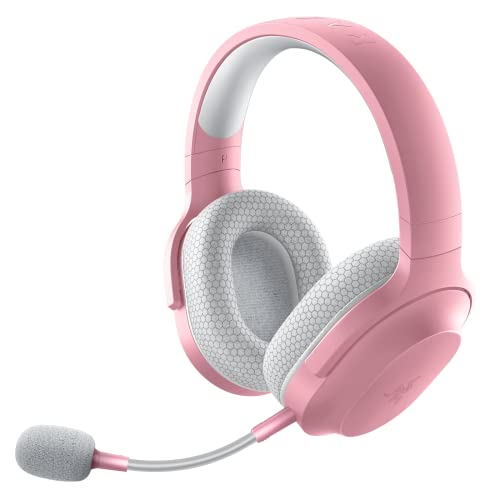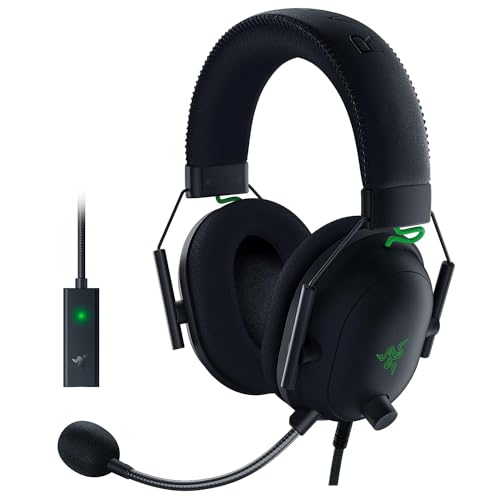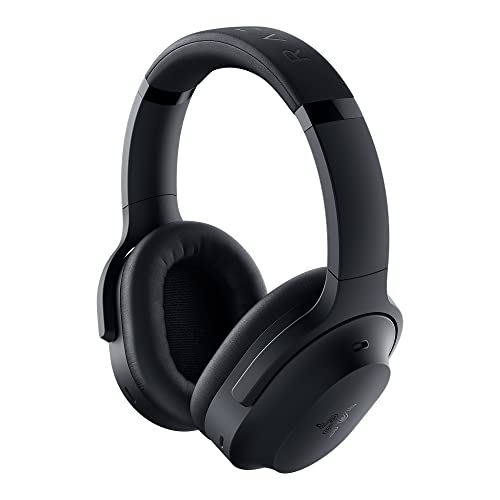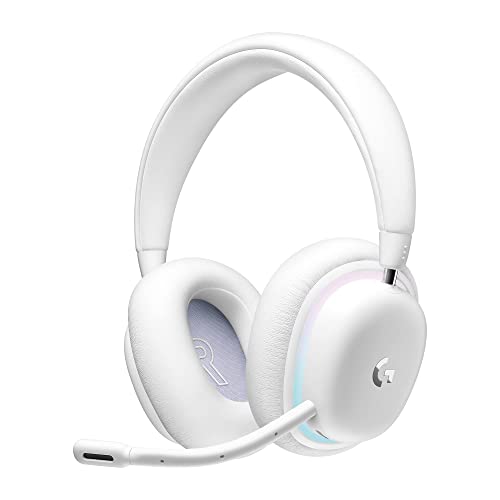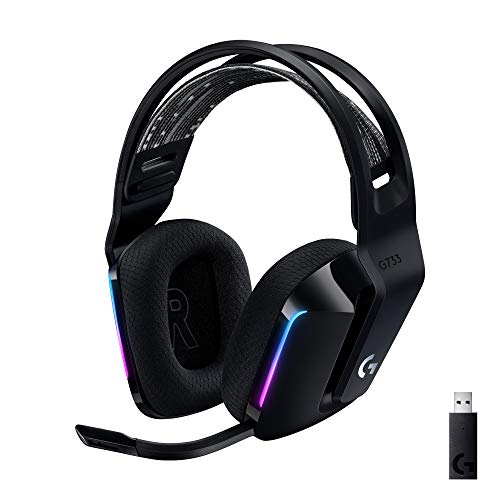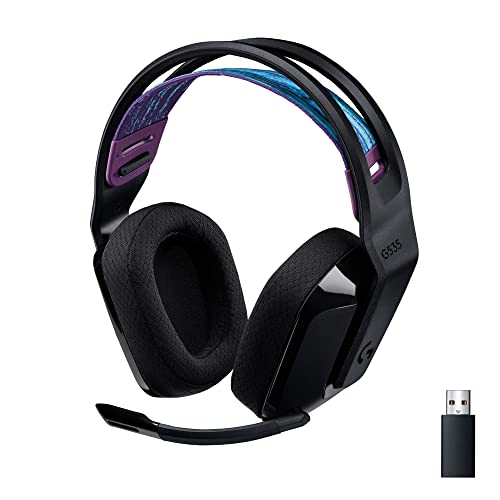What makes the best SteelSeries Gaming Headset? As with the best gaming headsets, it starts with top-notch audio quality, such as that delivered by the renowned SteelSeries Arctis line of wired and wireless headsets. Specifically, you might want to look for virtual surround sound and background noise cancellation.
Next, they should connect easily with your favorite gaming platform, whether it’s the Xbox wireless system, PCs, or mobile devices, and the SteelSeries Arctis models can do just that. Finally, SteelSeries gaming headsets have a comfortable design that doesn’t cause fatigue over long gaming sessions. So, if you’re looking to upgrade your headset, you’ll do well with a SteelSeries model, but remember that they are expensive, even with their budget models.
Keep reading to learn more about SteelSeries and its line of gaming headsets to see how they compare to the best gaming headsets from other brands.
Top Steelseries Gaming Headsets
#1 SteelSeries Arctis 3 All-Platform Gaming Headset
Award: TOP PICK
WHY WE LIKE IT: This headset has tuned speakers that enhance game sounds to give users an edge. It has a detachable 3.5mm cable that allows connecting to computers and consoles.
- Incredible 3D surround sound
- Detachable 3.5mm cable
- Intuitive on-ear cup controls
- Audio issues with some consoles
The SteelSeries Arctis 3 All-Platform gaming headset is the ideal device for use on consoles and PC. This headset has a detachable 3.5mm cable that will plug easily into computers and a number of consoles. It features a ClearCast Discord-certified mic that captures sound with astounding clarity. Featuring S1 speaker drivers, this device delivers high-quality audio. The headset features fabric air weave ear cushions, which are very breathable. However, this headset has some sound issues when connected to select consoles.
This gaming headset is compatible with Windows sonic spatial audio and supports native surround sound in Windows devices and Xbox consoles. It comes tuned to emphasize subtle sounds and whispers to entertain. This device enables hassle-free volume adjustment and muting with intuitive controls on the ear cap. This gaming headset has a premium black appearance that raises the aesthetics in the gaming room and blends in with other gaming gear.
#2 SteelSeries Arctis 3 Console Gaming Headset
Award: HONORABLE MENTION
WHY WE LIKE IT: This headset is optimized for use on consoles. It has on-ear controls for easy volume adjustment and muting. With a comfortable fabric cushion and lightweight materials, this headset is ideal for extended game sessions
- Amazingly lightweight design
- Intuitive on-ear controls
- Noise-canceling mic
- Weak bass
The SteelSeries Arctis 3 Console gaming headset is the device of choice for connecting to PS5 and other gaming consoles. This headset has a clear cast mic, capturing the user’s voice clearly. The mic has the noise-canceling tech to drown out background noise. With tuned S1 speaker drivers, this device delivers balanced sounds to give users an edge over the competition. However, the bass on this model is a bit low.
This gaming headset features lightweight materials that provide comfort during extended gaming sessions. It has a premium woven ski goggle fabric that provides comfort. Featuring on-ear controls for volume and muting, this device allows users to adjust the headset easily. This model’s black palette will add a touch of elegance to the gaming room. The microphone on this headset is retractable, allowing users to get it out of the way when listening to music.
#3 SteelSeries Arctis 1 Gaming Headset
Award: BEST APPEARANCE
WHY WE LIKE IT: This SteelSeries headset has a low-profile design with comfortable materials that will appeal to hardcore gamers who play for extended time periods. Its on-ear controls are easy to operate.
- Stylish design
- Noise-canceling mic
- Intuitive on-ear controls
- Heavy construction
The SteelSeries Arctis 1 gaming headset is a versatile device featuring a 3.5mm connector. This headset works with Windows PCs, Mac devices, and a variety of gaming consoles. With a detachable ClearCast mic, this headset captures and delivers refined sound. It’s Discord certified and has the noise-canceling tech to enhance communication. This gaming headset has a black palette and a stylish design to raise the aesthetics in the gaming room. However, it’s a bit heavy and uncomfortable for some individuals.
A reinforced headband on this gaming headset offers durability. The headband is adjustable, so it fits both small and larger heads. Featuring a simplistic, low-profile design, this headset can be used in the office. It even has a detachable mic, so users can take it for a jog. The device has fold-flat ear cups that provide comfort. This headset features powerful drivers that enhance the quality of soft sounds during gaming. The on-ear controls on this device offer intuitive operation.
#4 SteelSeries Casque Gamer Arctis 7 Noir Gaming Headset
Award: BEST WIRELESS
WHY WE LIKE IT: This wireless headset has a range of up to 40 feet, providing flexibility. With a battery life of up to 24 hours, this headset is ideal for use during transit.
- Outstanding built-in battery
- 40-feet wireless range
- DTS surround sound
- Charging issues
The SteelSeries Casque Gamer Arctis 7 Noir gaming headset is a wireless headset, which provides fast connectivity. This device uses 2.4GHz RF Wi-Fi for lossless, low-latency connections. With a Discord-certified ClearCast bi-directional microphone, this headset is very sensitive, capturing and delivering clear sounds. This noise-canceling mic is ideal for use in noisy places. It supports Surround Sound, offering a 3D immersive experience. However, the MicroUSB charging port on this device is prone to damage.
This SteelSeries Casque Gamer Arctis 7 Noir gaming headset has an integrated rechargeable battery, which runs for up to 24 hours on a single charge. It has a wireless range of up to 40 feet, allowing users to move around the room without going out of range. Equipped with high-quality S1 speaker drivers, this headset amplifies whispers and shadows to offer an advantage during gameplay. This headset features DTS surround sound and provides a complete, riveting gaming experience.
#5 SteeSeries Arctis 5 Gaming Headset
Award: BEST AMBIANCE LIGHTS
WHY WE LIKE IT: This headset features a prism ambiance light-illuminated earcup with customizable lights, adding flair to the gameplay. It has an integrated share jack for sharing in-game audio with friends.
- Stunning prism-illuminated ear cups
- Integrated USB ChatMix dial
- Impressive audio
- Only supports DTS on PC
The SteelSeries Arctis 5 gaming headset features premium materials that stand the test of time. This gaming headset has a Discord-certified ClearCast microphone, which offers studio-quality sound capture features. Equipped with S1 speaker drivers, this headset is optimized for capturing even faint in-game sounds, giving the user an edge. The speakers are DTS surround sound-capable, delivering a hypnotic gaming experience. However, this device is designed for PC only; consequently, the software and DTS 2.0 on this device only work with PCs.
This SteelSeries Arctis 5 gaming headset has a USB ChatMix Dial to enable users to adjust the balance between chat audio and in-game sounds easily. The headset has prism RGB illuminated earcups, offering a good ambiance. The RGB lights are customizable, allowing users to choose from 16.8 million colors. With on-ear controls, this headset enables adjusting volume and muting the microphone easily. An integrated share jack allows users to share game audio with friends.
#6 SteelSeries H Wireless Gaming Headset
Award: BEST COMPATIBILITY
WHY WE LIKE IT: This headset supports Dolby Virtual 7.1 surround sound, offering a 3D listening experience. The device comes with two hot-swappable batteries, providing infinite battery life.
- Excellent dual battery packs
- Great speakers with 7.1 surround sound
- Compatible with PC and mobile devices
- So-so build quality
The SteelSeries H Wireless gaming headset has large ear pads that provide an immersive experience. This headset boasts Dolby virtual 7.1 sound technology, delivering an engaging experience. With a retractable directional mic, this device captures sound effectively. It has a mute light to alert users when the microphone is muted. We like the two lithium-ion battery packs that come with this device. The battery is hot-swappable, so users don’t need to interrupt gameplay when swapping. However, this headset features some weak plastic parts.
This SteelSeries H Wireless gaming headset has next-generation speaker drivers that enhance in-game sounds. This device is versatile and compatible with PCs, TVs, and consoles. It has an integrated low-latency wireless adapter for effortless wireless connectivity. The headset has an OLED display to enable users to monitor settings easily. On-ear controls enable adjusting the settings on this device easily. This model has a cushioned headband for comfort. It has polished parts that enable easy cleaning.
Introduction to SteelSeries Gaming Headsets
SteelSeries is a Danish brand that produces a wide range of peripherals and gaming hardware for PC, mobile, and console gamers. Founded in 2001 and headquartered in Frederiksberg, Denmark, SteelSeries began as a manufacturer of gaming-focused mousepads and has quickly expanded in the decades since.
After acquiring gaming peripheral company Ideazon, SteelSeries began developing new lines of products and establishing partnerships with major game developers, including EA, Blizzard, and Valve. SteelSeries also maintains numerous eSports sponsorships.
In the audio realm, the brand produces the well-regarded SteelSeries Arctis line. Ranging from mid-level to premium price points, the Arctis line includes wireless and wired headset models, console-specific headsets designed to pair with the Playstation, Nintendo Switch, Xbox Wireless, and all-platform gaming headset models.
SteelSeries Arctis products excel in their convenience and modular, stylish design. Most offer microphones for clear voice chat audio. Some Arctis Pro wireless headsets feature swappable batteries, which is a big plus for long gaming sessions.
How SteelSeries Gaming Headsets Compare to Other Brands
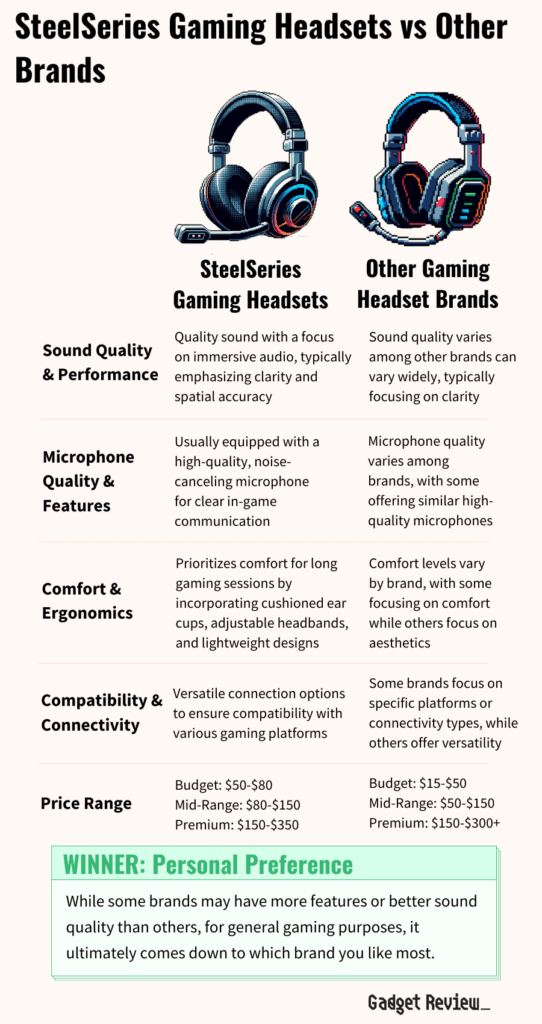
(Pro 1) Gaming-Focused Sound: SteelSeries headsets deliver an excellent sound profile for multiplayer and competitive gaming, thanks to development input from pro gamers. In particular, the Arctis Pro headphones, with their hi-res capable speaker drivers, don’t overwhelm with bass, instead emphasizing crisp sound and pin-point detail.
(Con 1) Battery Life Trails Some Competitors: SteelSeries Arctis Pro wireless model headsets typically offer about 20 hours of battery life, which is enough for most gamers but trails some of the more expensive gaming headsets providing 44 hours or more on a single charge. However, some SteelSeries Arctis models have a 24-hour battery life, and the Arctis Pro does offer its unique swappable battery solution.
(Pro 2) Good Ergonomics: SteelSeries’ headsets feature well-placed on-ear controls and a sensible volume wheel. The retractable microphone and mic settings are also generally accessible and easy to use, helping maintain focus.
(Con 2) Smaller Drivers: While some other headphone brands use 50mm drivers, SteelSeries Arctis Pro models generally stick with 40mm drivers. Driver size isn’t that crucial for the frequency range, most important for gaming, however.
(Pro 3) Broad Compatibility: Newer SteelSeries Arctis Pro Wireless models offer excellent cross-platform compatibility, with USB-C cable, USB-C dongle wireless transmitter, and optical analog 3.5mm audio cable options for connecting to mobile devices, PCs, laptops, and consoles.
(Con 3) Some May Find Set Up Complicated: While Arctis Pro models offer outstanding customization and versatility, offering a wireless transmitter base station with integrated controls or a digital-to-analog converter, some users may find the setup process overly complex.
(Pro 4) Solid Retractable Microphone Options: Some models include a Discord-certified ClearCast bidirectional microphone mounted on a retractable boom arm. A great mic in gaming situations, it effectively cancels out noise from mechanical keyboards and computer fans.
(Con 4) Full-Featured Models Get Pricey: SteelSeries offers outstanding features like low-latency wireless connectivity and comfortable “ski goggle” suspension headbands in the mid-market and premium price range. However, they don’t provide as many budget-minded basic gaming headset options as some competing brands.
In that case, have a look at our lists of the leading Corsair gaming headset and the best Sennheiser gaming headphones.
Why Should You Buy a New SteelSeries Gaming Headset?
There are several reasons why you might consider buying a SteelSeries gaming headset. If you’re building out a new gaming station around a gaming PC, high-end gaming laptop, or new-generation console, you might also want to make sure your headset is up to the task of rendering the latest game sound effects and doing justice to the musical soundtracks of your favorite games. Thus, a new SteelSeries headset with the brand’s Hi-Res audio might be a great buy.
A new SteelSeries Arctis headset might also be a great choice for gamers starting a streaming channel or uploading more content to streaming platforms. New Arctis Pro Wireless headsets offer an award-winning wireless range and low-latency connectivity, plus lossless 2.4GHz wireless audio, giving an excellent balance of quality and freedom of movement.
Competitive or online multiplayer gaming may be another great reason to look into a new and improved headset. SteelSeries offers the ClearCast noise-canceling microphone, a retractable boom mic tuned for clear voice chat audio in multiplayer game environments.
Current SteelSeries gaming headsets offer improved connectivity and performance, with key features such as lossless 2.4GHz wireless audio and USB-C ports for easier wired connection to current-generation mobile devices. The new USB-C charging cable on some models affords improved fast charging capability.
Along with more seamless multi-device compatibility, new SteelSeries Arctis headsets offer updated virtual surround sound technology, letting you get the complete game audio experience of the latest consoles.
How Long Do SteelSeries Gaming Headsets Last?
The lifespan of headsets varies widely depending on the type and quality of the headset, the use case scenario, and environmental conditions. Average gaming headsets typically last around three to five years, while audiophile headphones and mixing headphones can last a decade or longer.
Wireless models typically wear out sooner than wired headsets since they may be limited by how long their built-in rechargeable batteries last. Modern lithium-ion battery cells claim to last anywhere from 500-2000 charge cycles. Extreme heat, deep discharging, and frequent fast charging can shorten battery lifespan. Wireless transmitters may also become obsolete due to changing connection protocols.
SteelSeries Arctis headsets have a mostly durable design using lightweight steel alloy for stressed parts such as the adjustable headband frame and swivel mounts.
The unique dual battery feature of the flagship SteelSeries Pro Wireless headsets is worth noting. In theory, the swappable batteries should allow this model to last longer than other wireless gaming headset models since you can replace batteries once they degrade.
Typical headset wear items include earcup padding, adjustable strap anchors, USB ports, and 3.5 mm audio jacks. Built-in foam filters on microphones and speaker diaphragm covers can also become brittle and break down over time. Frequent replacement items include the USB dongle, carrying case, and earphone covers.
To get the most longevity out of your gaming headset, experts suggest choosing a model with a robust design and quality materials, along with the most recent type of charging cable and wireless connectivity. Keep your headset someplace dry and free from extreme heat and high amounts of dust. A well-placed desk hook or headset stand can help keep your headset safe from accidental drops and beverage spills.
SteelSeries Gaming Headset Warranties
In North America, SteelSeries headsets purchased directly from the SteelSeries Web Store or an authorized retailer come with a 1-year limited warranty covering parts and manufacturing defects. Replacement products shipped from SteelSeries get a 30-day guarantee or the remainder of the original product’s warranty period, whichever is longer.
This non-transferable warranty covers all major parts of the gaming headset, including USB dongles and the retractable or detachable microphone. It doesn’t cover cases, cables, or batteries, and it excludes accidental damage, customer-installed software, and normal wear-and-tear, such as chips and scrapes.
EU and Australian customers get a 2-year limited warranty with broadly similar terms and conditions.
For more great reviews, check out our list of the leading headphones for VR.

